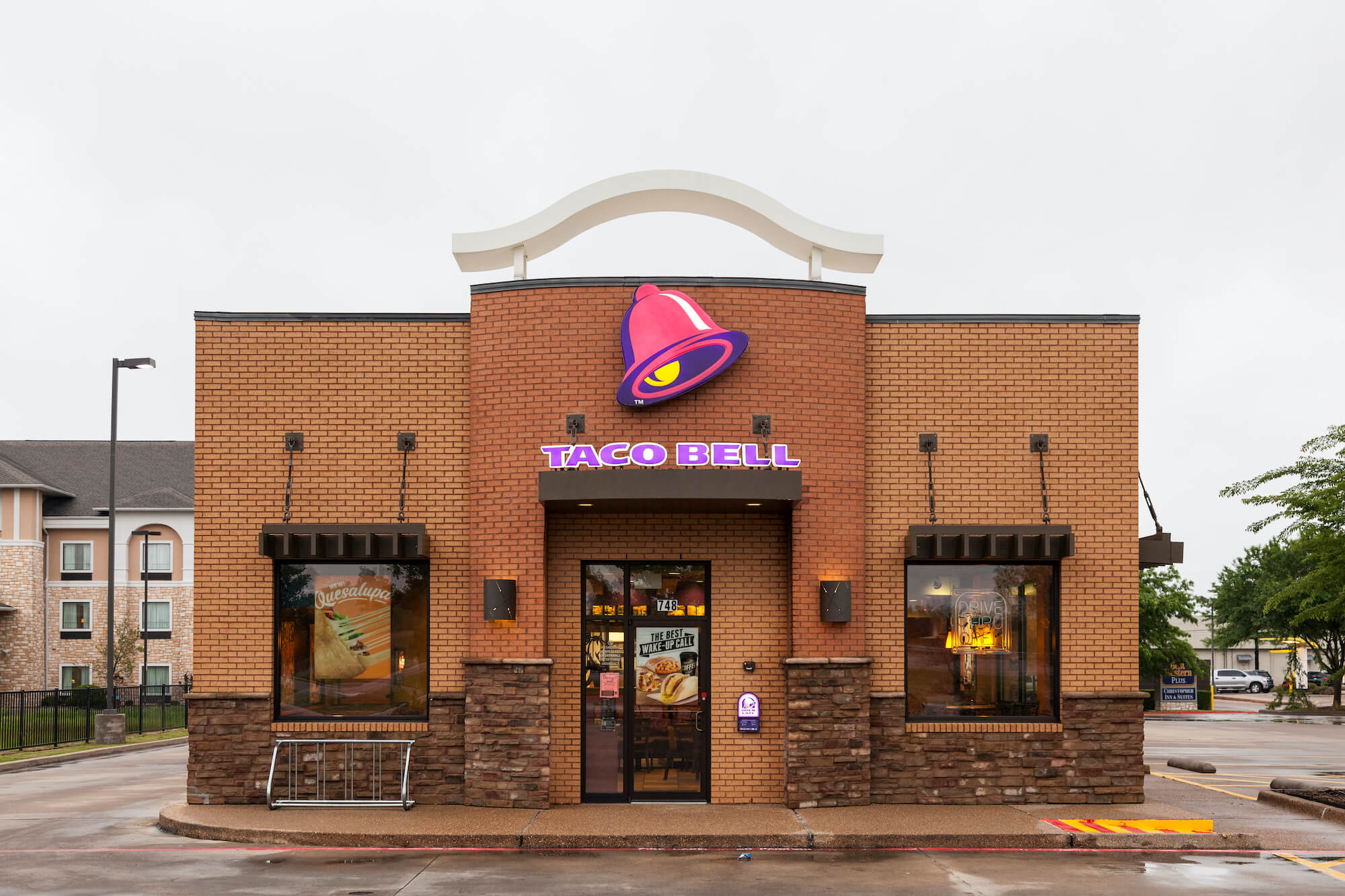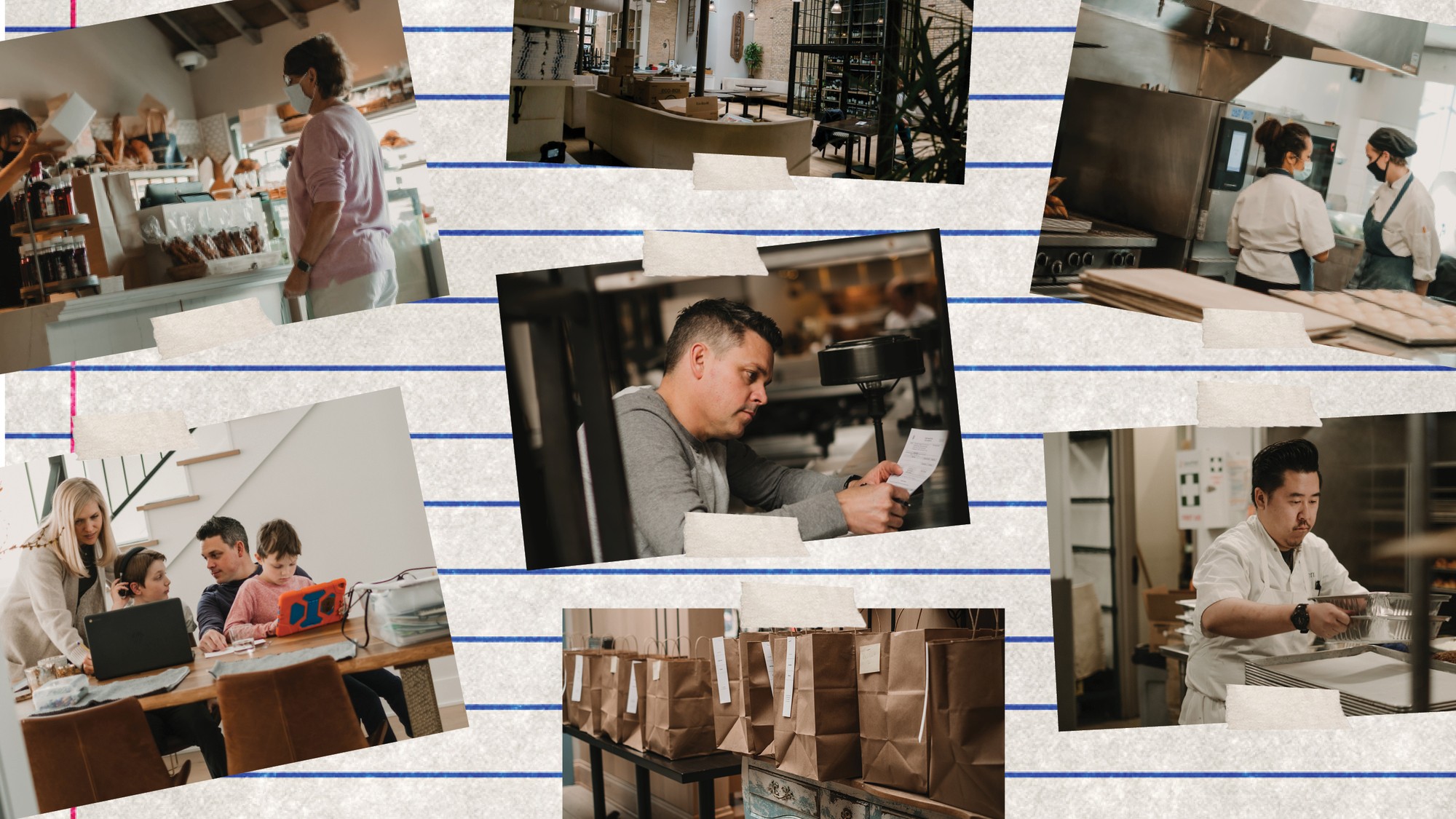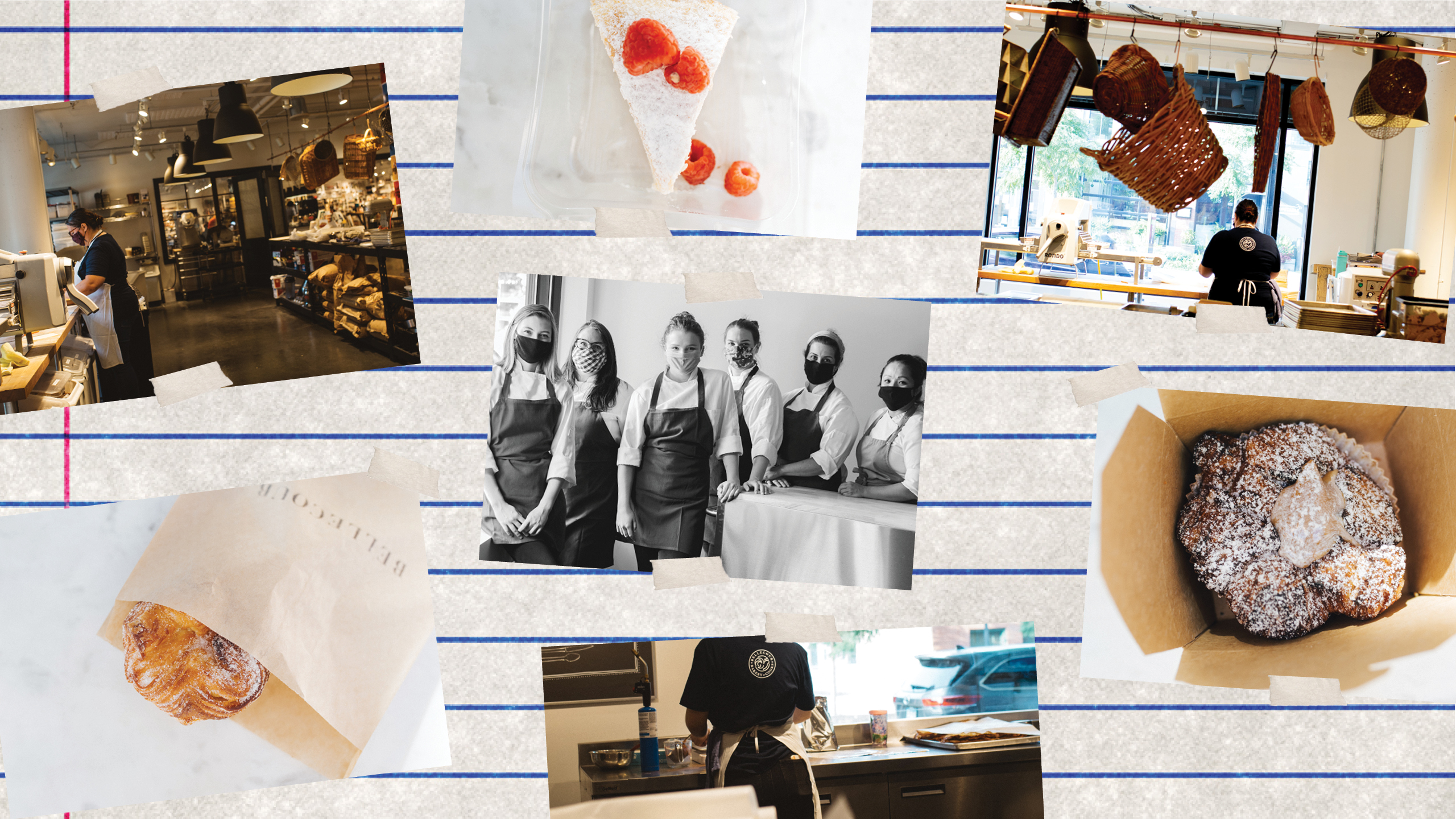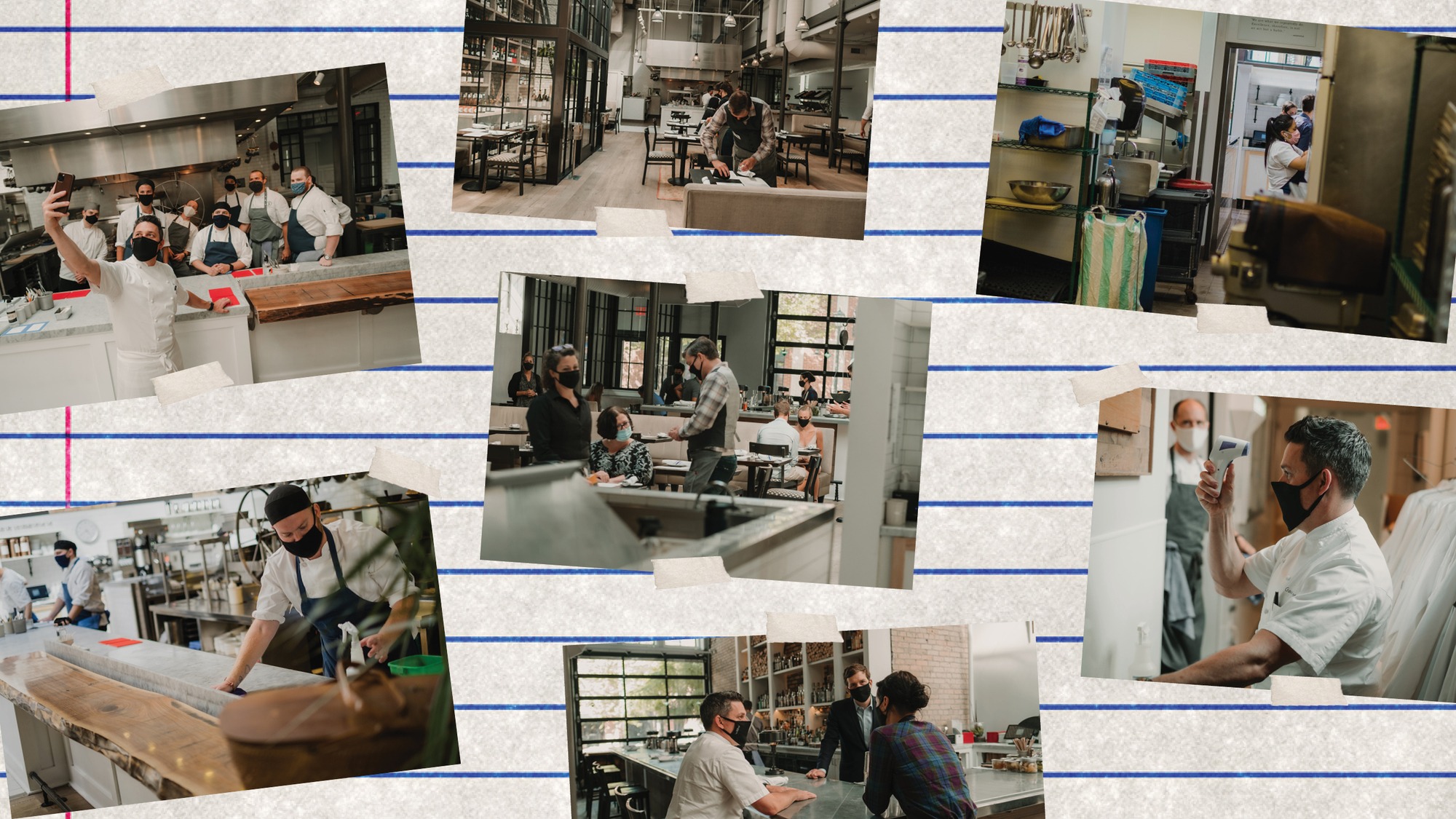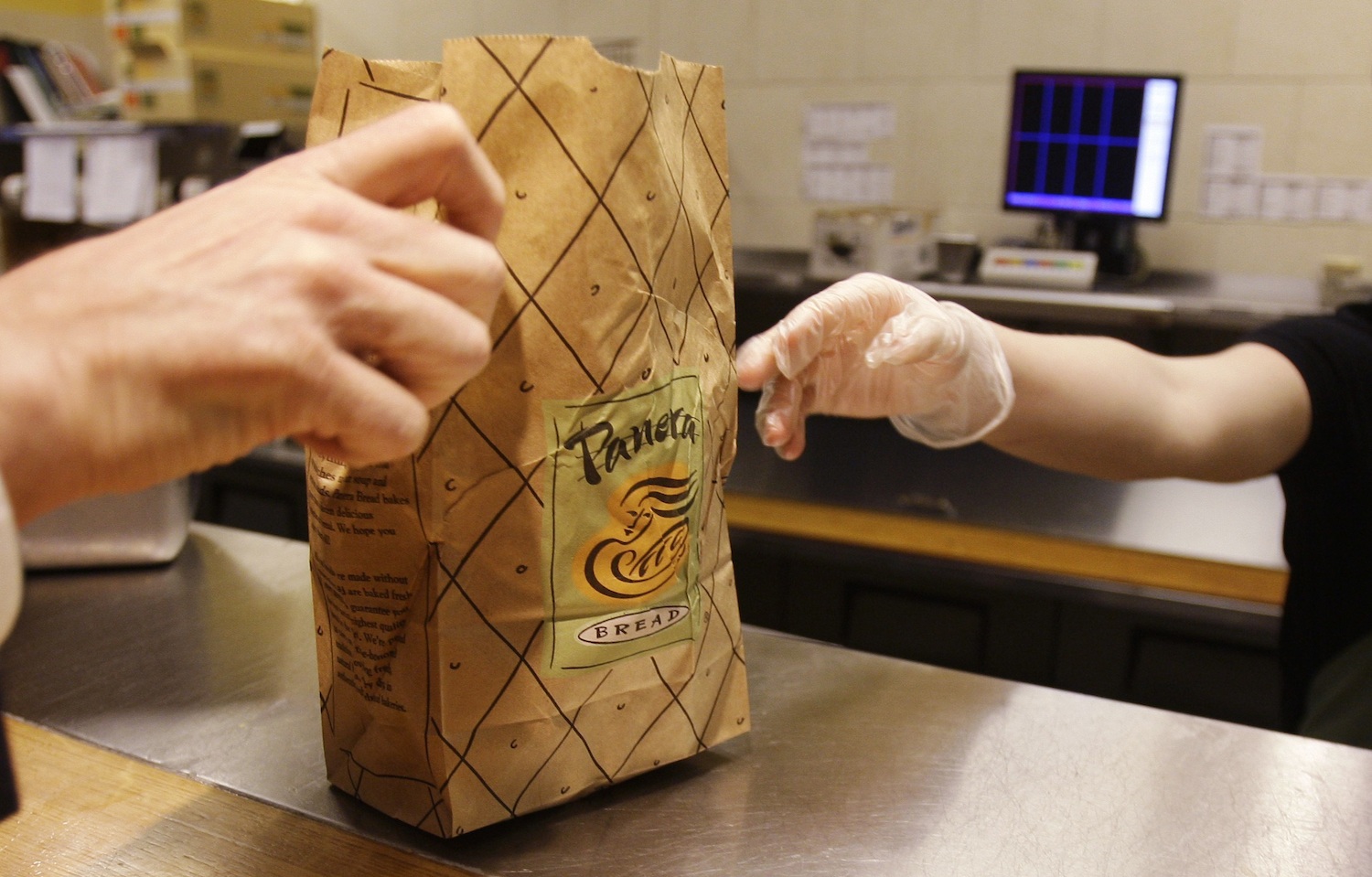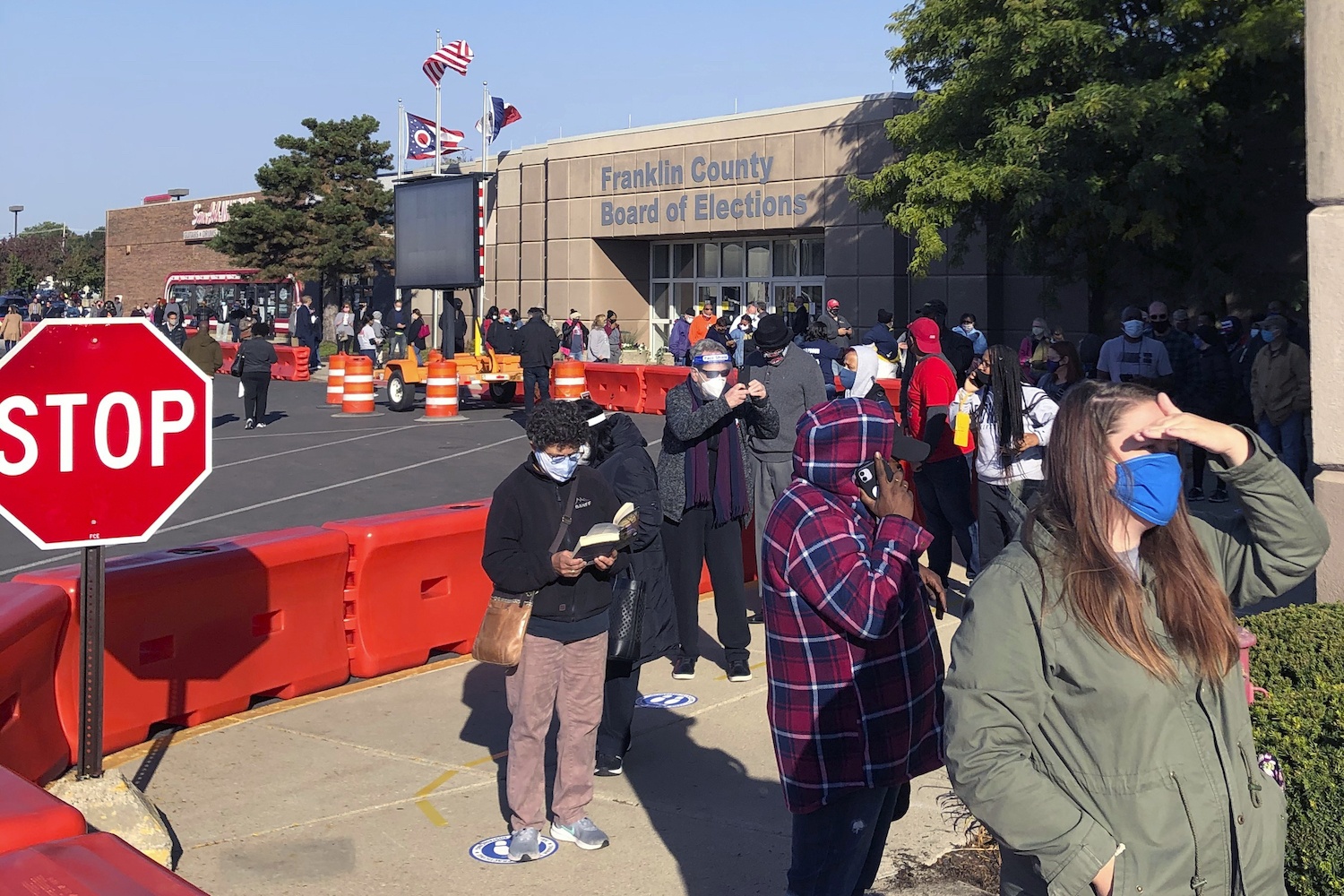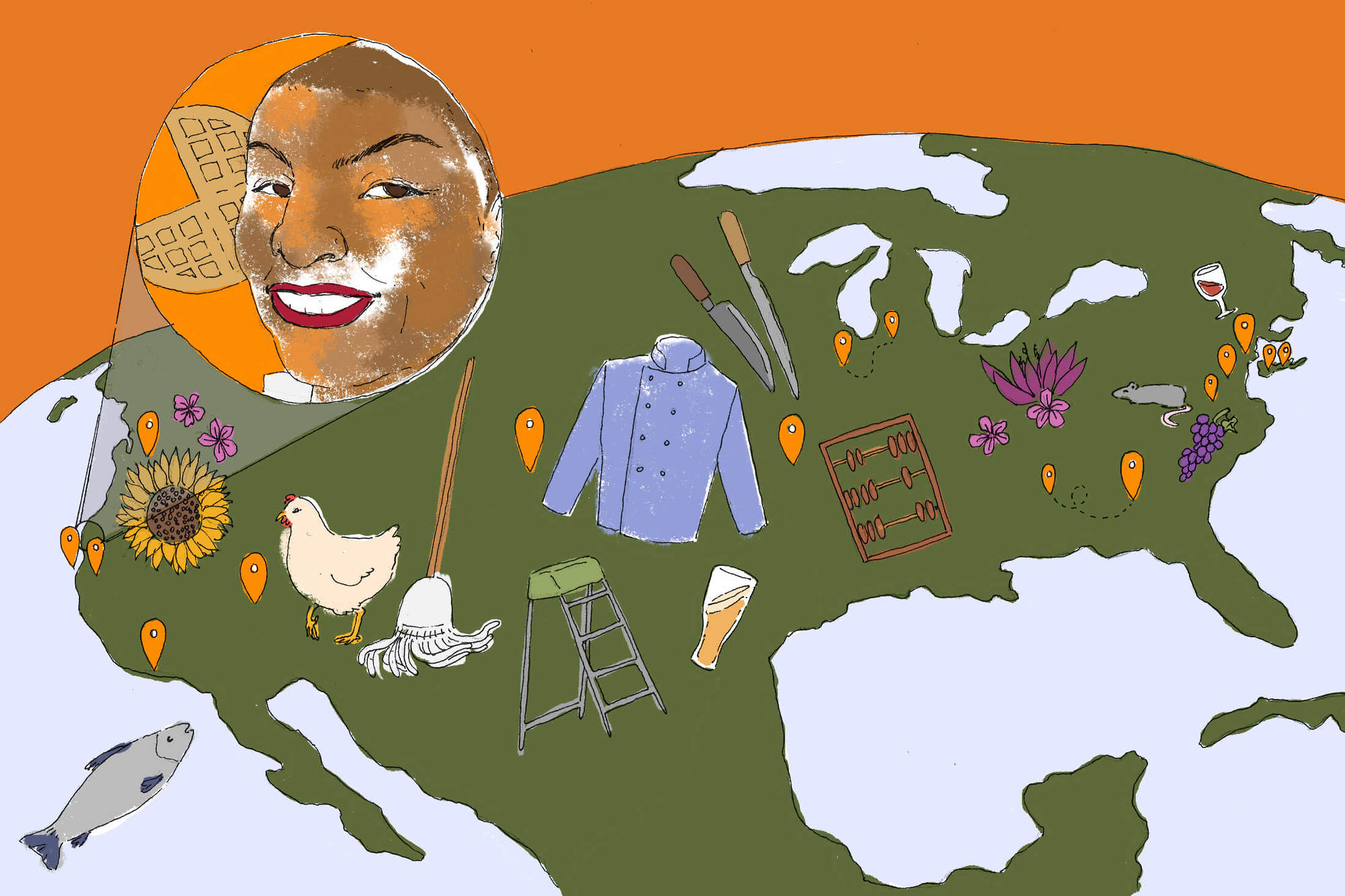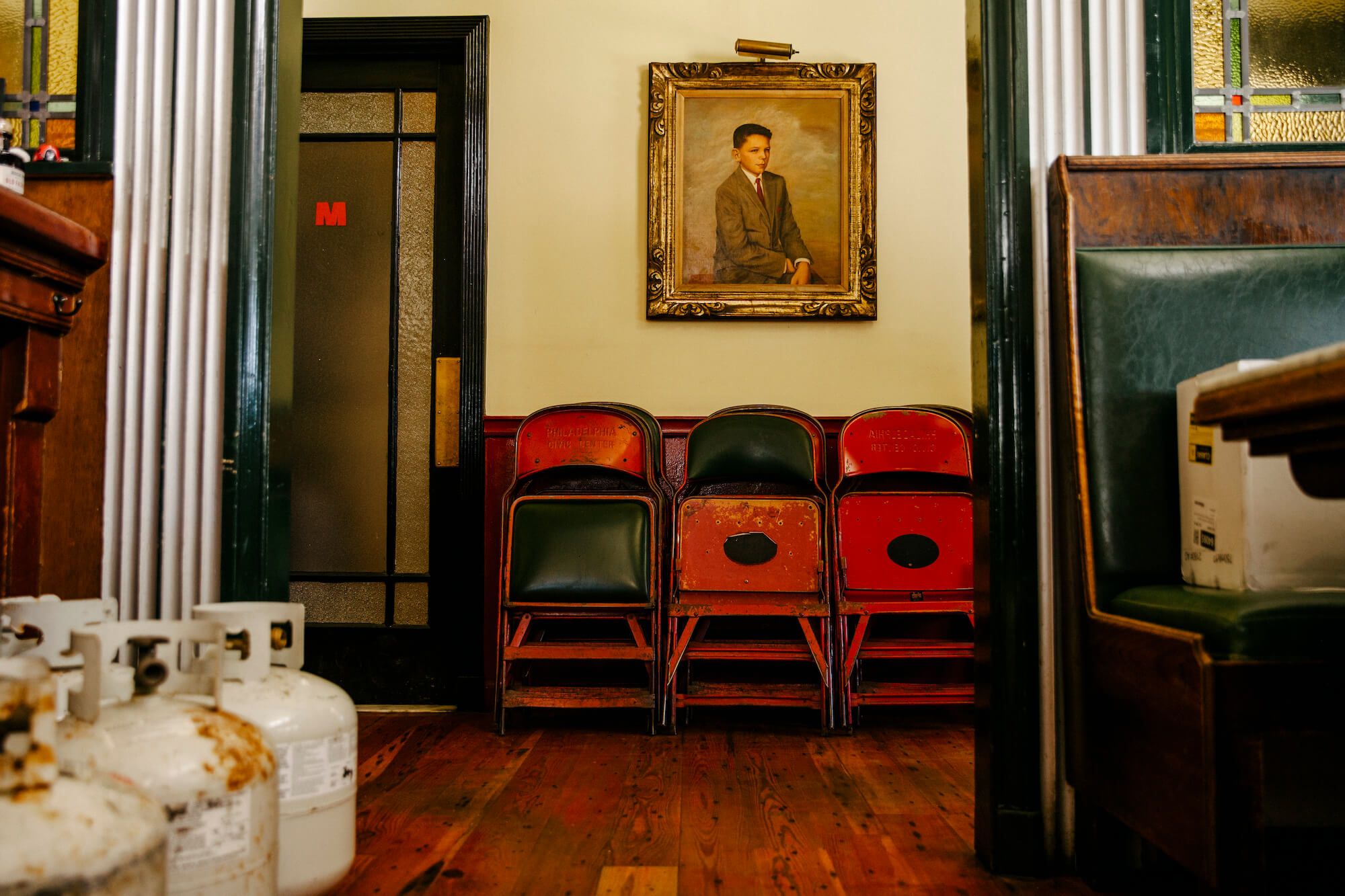
Samanta Helou Hernandez
The place you used to go for dinner has become a furniture warehouse with a take-out window. Here’s how it looks from inside.
This story is written by Karen Stabiner with additional reporting by Jesse Hirsch, plus photography and additional reporting from Samanta Helou Hernandez and Talia Moore.
The pivots come so fast they’ve blurred into one extended, manic pirouette, as Los Angeles restaurants that just invested in outdoor amenities turn back to take-out and delivery, with no good sense of when outdoor will return. Indoor dining shut down in July in L.A., and it ends next week in New York City.
Pictured above: The inside of Little Dom’s, an Italian restaurant in Los Angeles, California.
This week’s tally of closed restaurants is 110,000, and fewer than half anticipate they’ll be able to come back. The verbiage used to describe the national meltdown is getting to be apocalyptic, in proportion to the news, with references to mass extinction and a generation of talent, lost.
Three tiers of California government say restaurants are complicit in the state’s current Covid surge, though that hasn’t stopped everyone from Governor Gavin Newsom to Los Angeles Supervisor Sheila Kuehl from heading out to eat even as they told their constituents to stay home—in Kuehl’s case, on the same night she voted for an outdoor dining ban. Compliant restaurateurs raise their voices in growing desperation, challenging the lack of compelling data and begging for aid while they pile up the space heaters, the new tables and chairs, the potted plants and string lights, and stack them indoors, where hospitality used to live.
All those rooms that once welcomed us, that said come in, sit down, relax, we’re going to take care of you, whether care meant a pizza or a tasting menu, gone. It’s a stark reminder of how dire things are: The dominant trend in LA restaurant design at the moment is 21st century furniture warehouse. The next step, unless someone finds a solution, could well be everything-must-go.
We decided to peer into those empty LA storefronts at what used to be oases of culinary fun, and are now glorified storage facilities, some with to-go operations on the side. And we wandered New York City, which feels lucky because limited indoor dining and outdoor dining are still possible—and unlucky because weather will eventually play the role elected officials have played in California, effectively ending outdoor dining unless you’re one of those hardy souls who aren’t worried about the risks of eating inside a personal tent.
Nobody’s immune.
We expect numbers to be definitive—two is two, and four can’t be six—but Covid has scrambled all that, and restaurants seem to be a lightning rod for our confusion as we try to quantify behavior. One restaurant owner posted a video of her empty outdoor dining space, which sat right next to a row of picnic tables where cast and crew on a location shoot would take their meals. Yes, cast and crew get regular tests and yes, it’s a more controlled environment because there are no anonymous guests. Tell that to restaurant owners who haven’t yet seen convincing data to support the current shutdown, and who wait, losing money daily, for someone in a position of authority to come up with a consistent survival strategy.
Los Angeles County has announced a new round of grants, but Los Angeles city restaurants don’t qualify. Los Angeles City has announced a new $800 stipend, which is supposed to get an unemployed worker through the end of the year. Restaurant owners face a reprise of last spring, only worse: No PPP loans, no added unemployment benefits, no eviction protections.
It’s unlikely that M.F.K. Fisher and Joni Mitchell, legendary food writer and songwriter, respectively, ever met, but the point at which their ideas converge might be worth considering, if you’re the sort of person who signs petitions or shows up at hearings or writes to your elected representatives. Or if you ever went to a restaurant to celebrate a birthday or a new job or nothing at all, except not having to cook.
M.F.K. Fisher wrote, “First we eat. Then we do everything else.”
Joni Mitchell wrote, “Don’t it always seem to go that you don’t know what you’ve got ‘til it’s gone?”
Officials understandably want to make sense out of nonsense, particularly when doing nothing can kill you. The question is whether, in their haste to impose order, they’re making some irretrievably wrong moves.
These conversations have been condensed for length and edited for clarity.
—
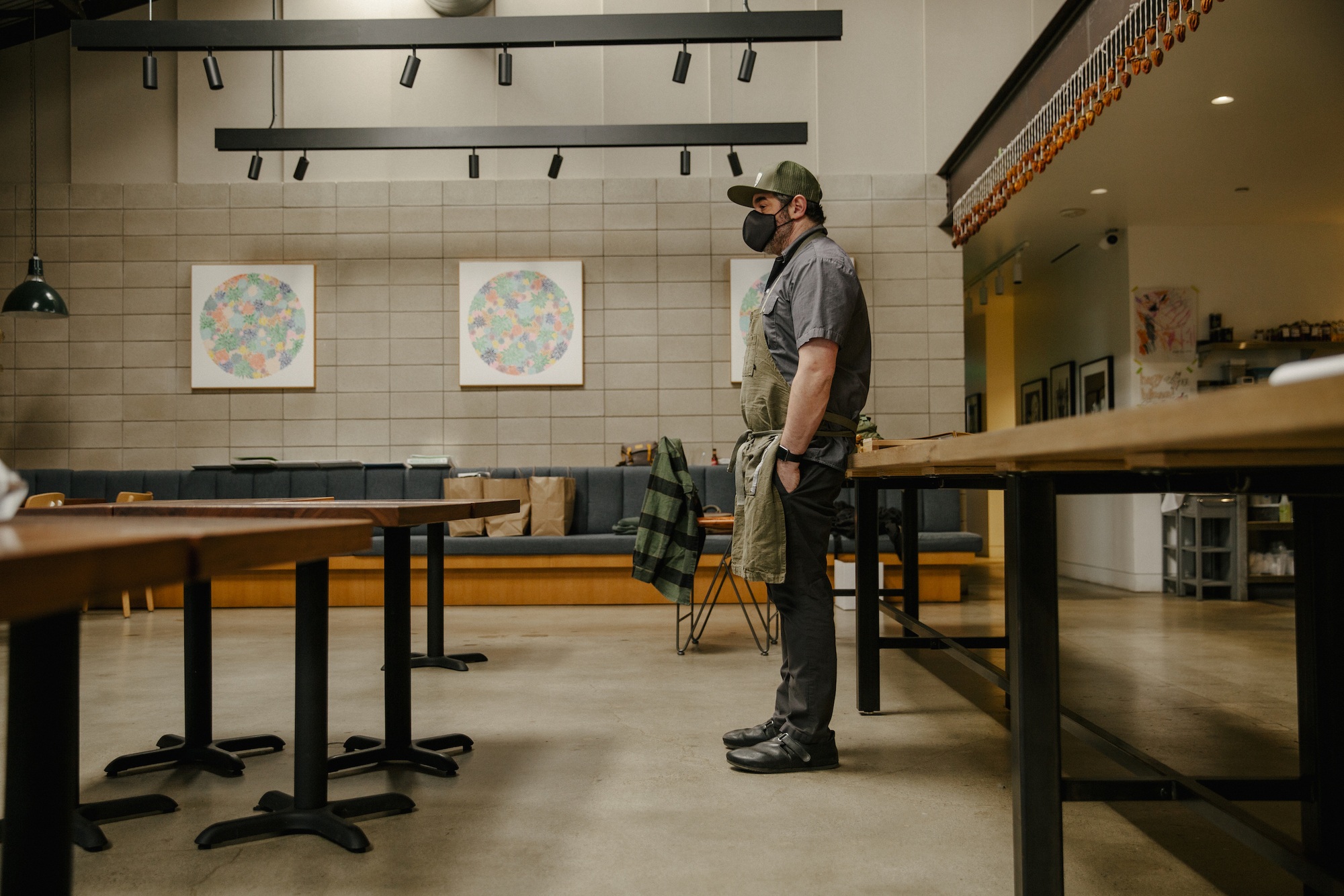
Jeremy Fox, owner of Birdie G’s, stands in an empty dining room.
Samanta Helou Hernandez
Birdie G’s, Santa Monica
Jeremy Fox, owner
Opened in 2019
If there’s one thing this year has taught me, it’s not to plan three hours ahead of yourself. It’s a fool’s errand to predict what’s next.
It’s really hard to look around, to take in the emptiness of the space. We are a big restaurant, just a large space, and it’s hard to even remember what it was like full. It’s like a false memory, picturing it filled with voices and music and clinking glasses…did that really happen?
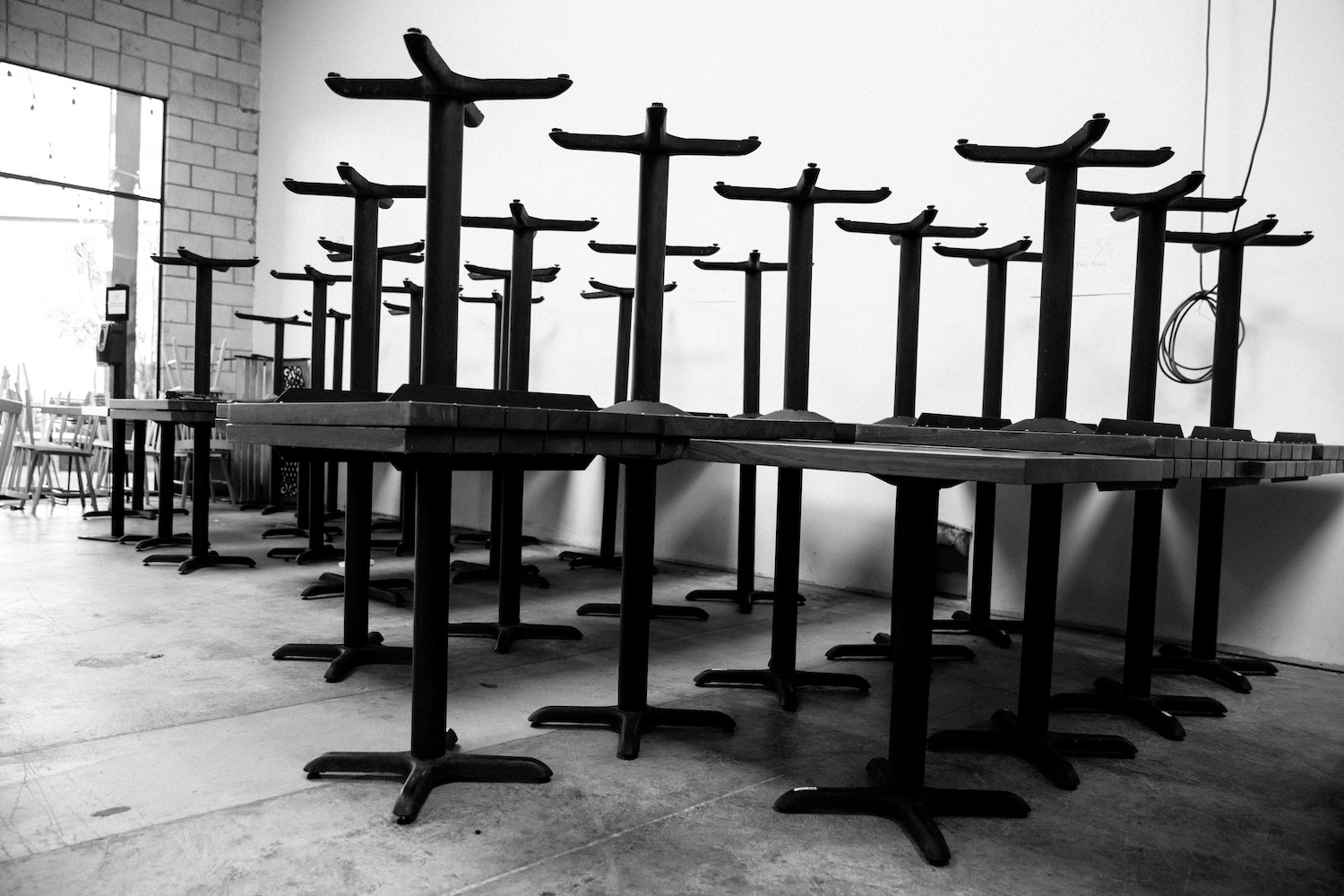
Birdie G’s, Santa Monica.
Samanta Helou Hernandez
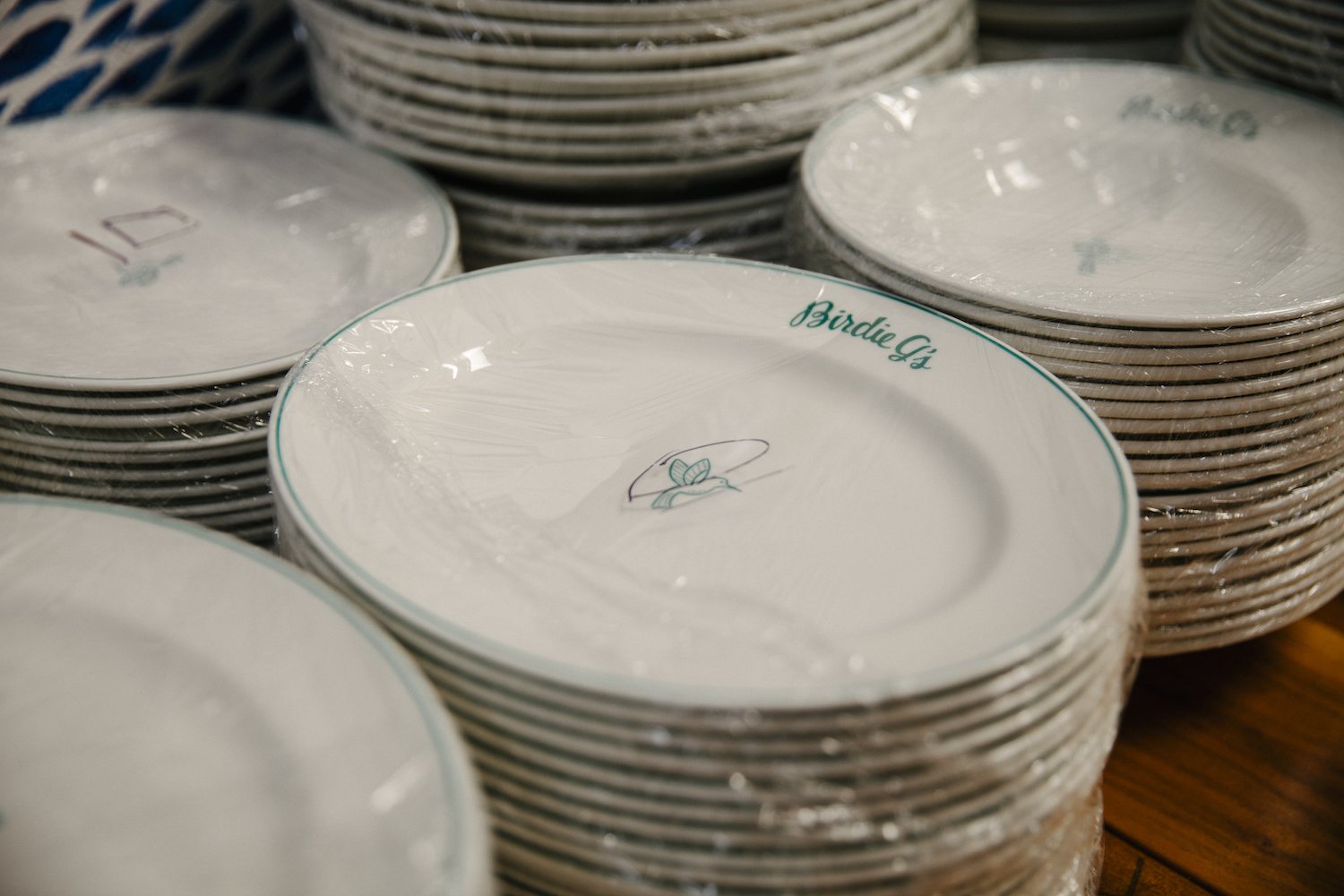
Birdie G’s, Santa Monica.
Samanta Helou Hernandez
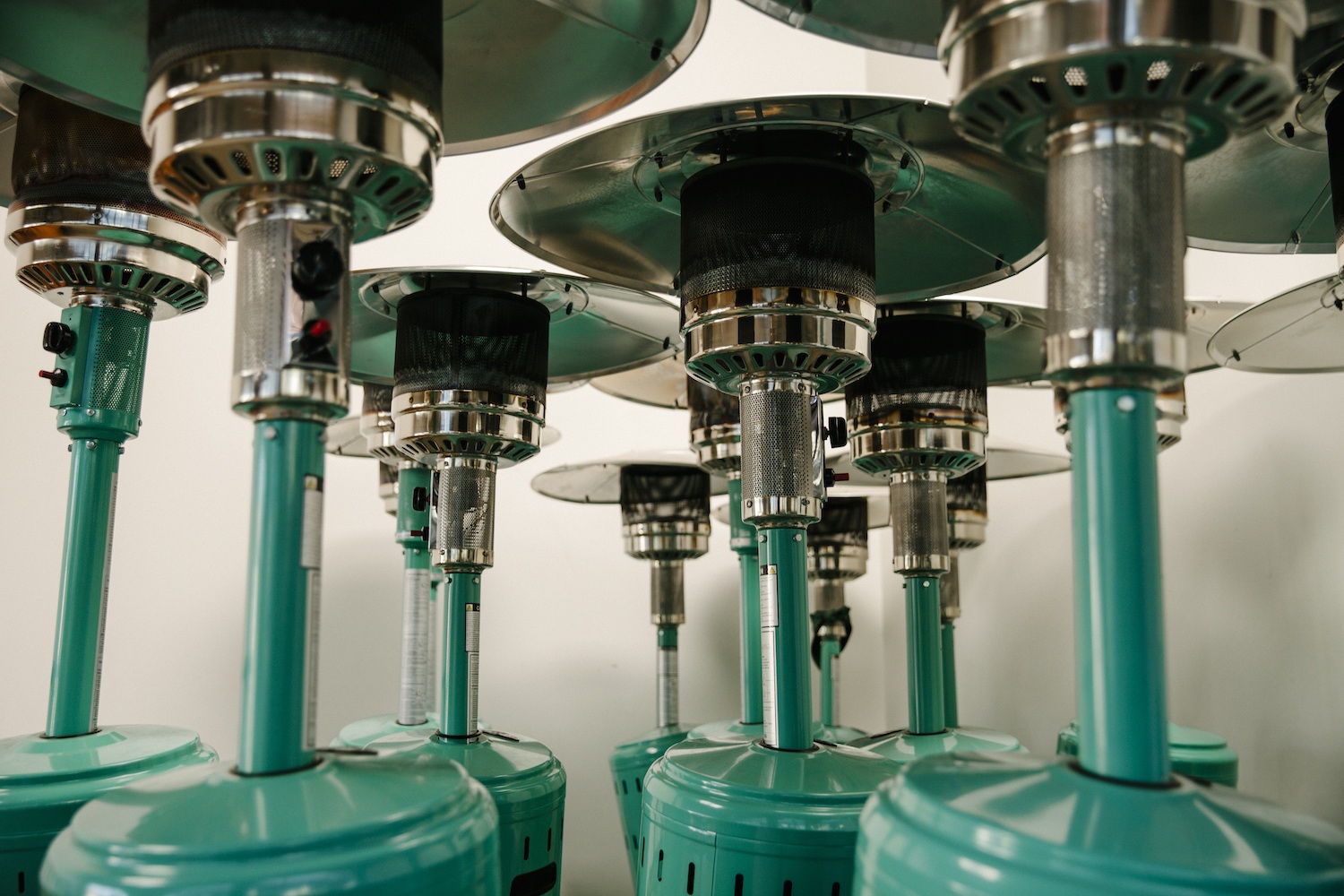
Birdie G’s, Santa Monica.
Samanta Helou Hernandez
—
Barney Greengrass, New York City
Gary Greengrass, owner
Opened in 1908
Time is the biggest thing now. Thank god, we have the vaccine, but it’s going to take time to filter through society. Bigger than that, we might need a shot to people’s heads! ~laughs~ Really though, it’s going to take serious time to readjust to normalcy, for people to feel normal riding the elevator with other people, to not jump in the air like they have a knife when someone gets too close to you.
Our catering business was huge. We always used to say ‘We’re here at the beginning for your bris and here at the end for your funeral’ but no one can gather now. We get calls for six people, maybe.
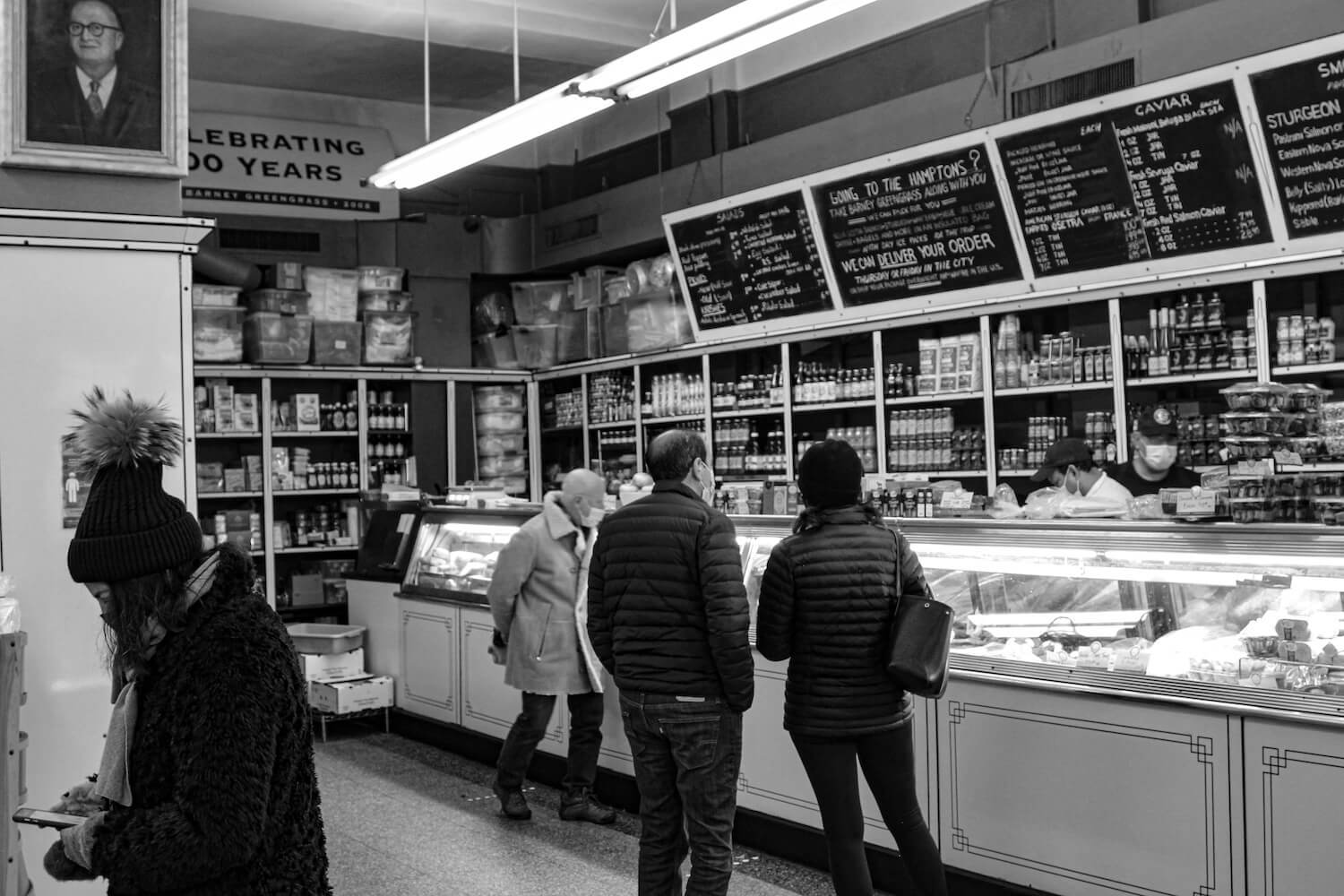
Barney Greengrass, New York City.
Talia A. Moore
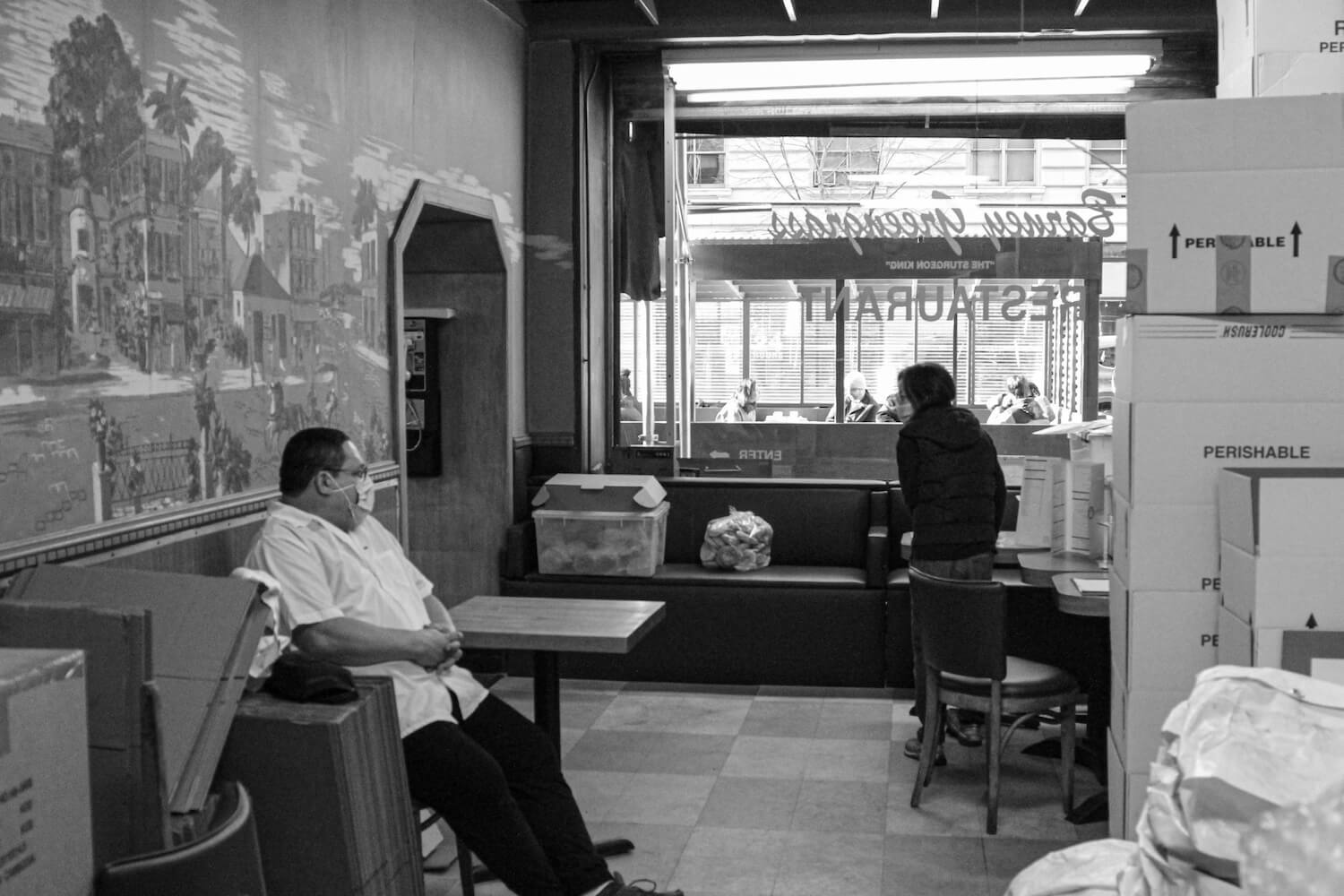
The deli’s main indoor dining area is now used for storage and as a menu sanitation station.
Talia A. Moore
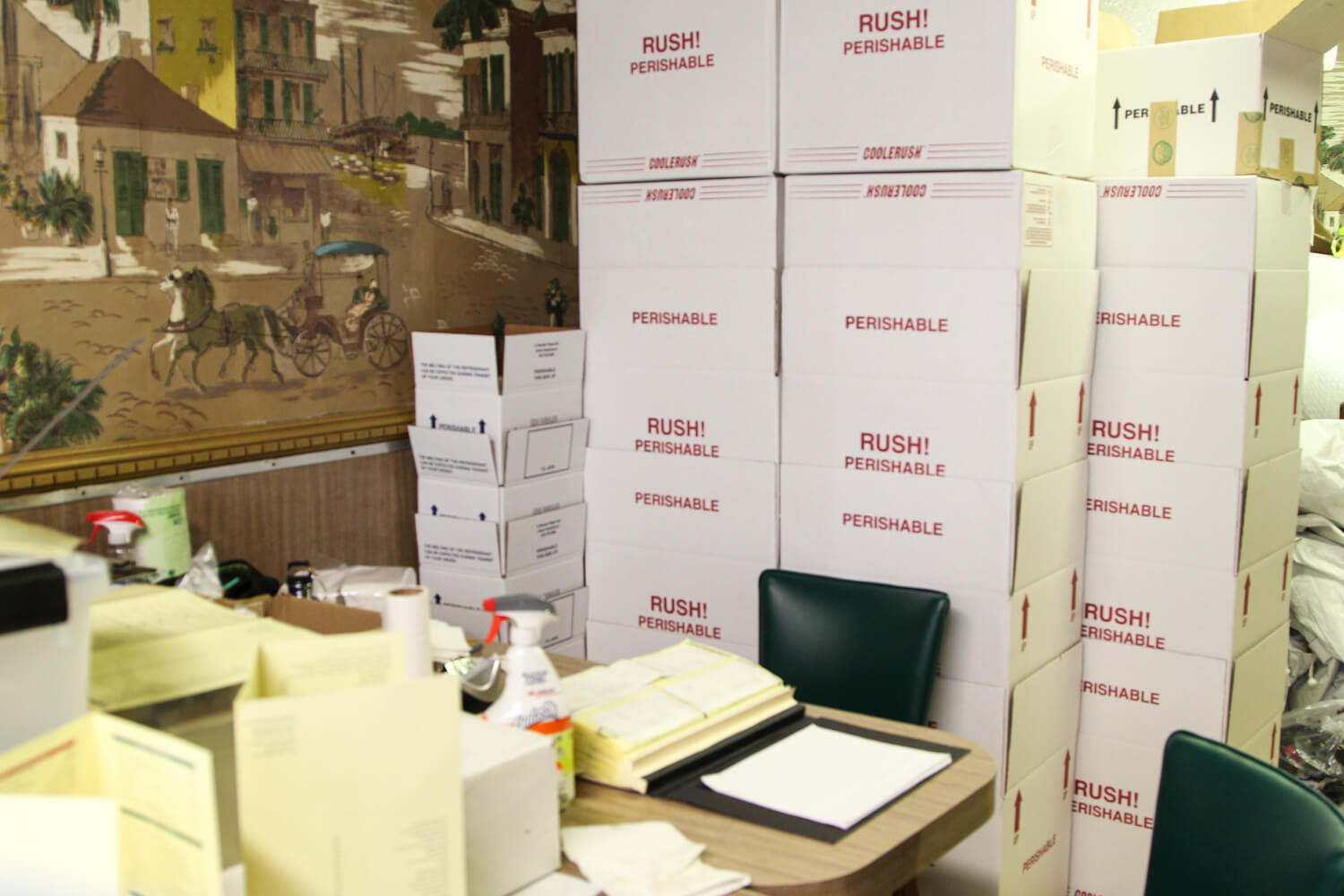
At Barney Greengrass, food orders are shipped across the country.
Talia A. Moore
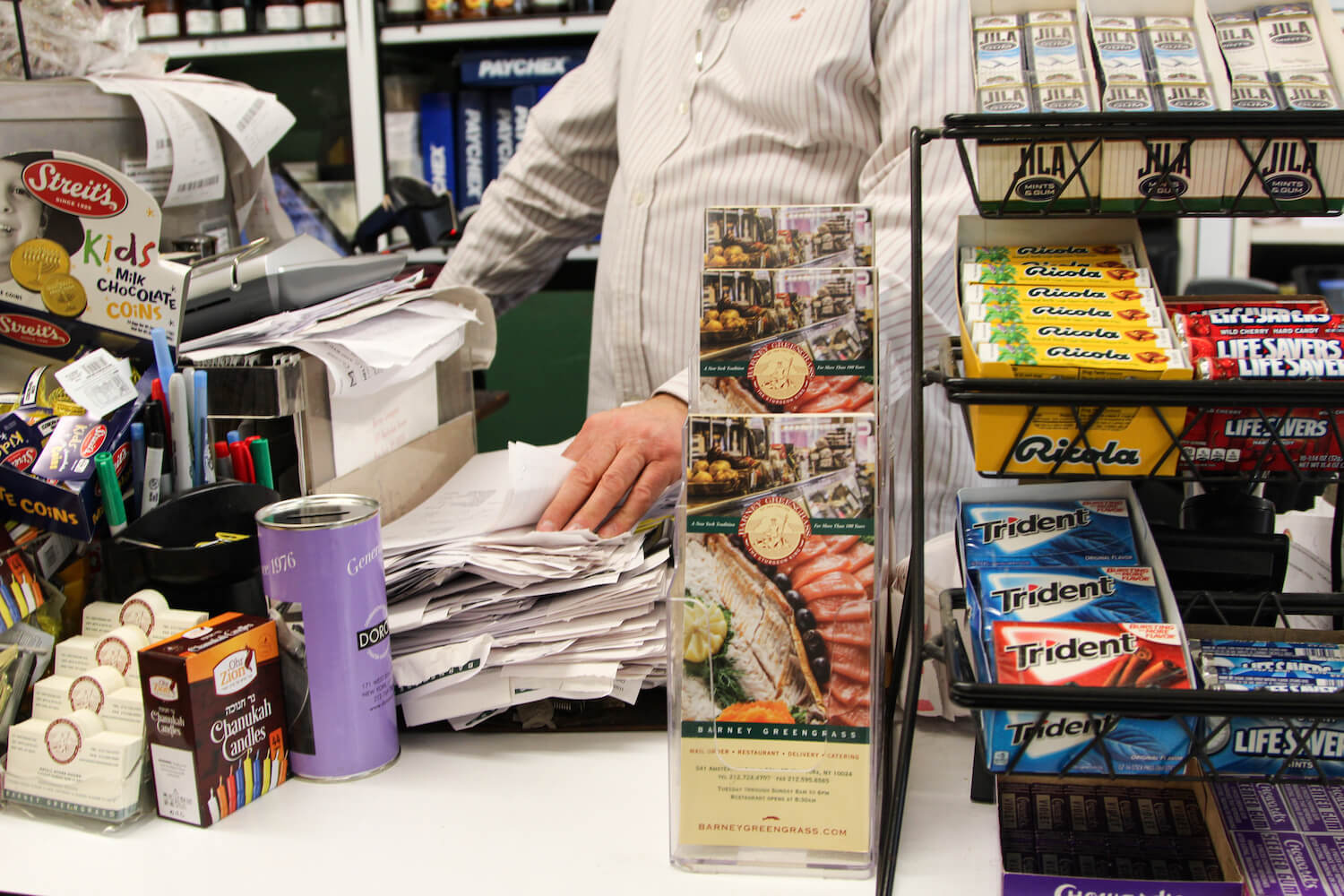
Gary Greengrass holds a stack of customer shipping orders behind the counter.
Talia A. Moore
—
Sabores Oaxaqueños, Los Angeles
Valentin Granja, owner (translated by his wife, Lili)
Opened in 2012
We’re only doing takeout and delivery. People call, they ask to dine in and we say no. They tell us ‘we’re going to a different restaurant.’
It is sad, we’ve had to cut employees’ hours. Now we only have two working in the morning, two in the afternoon. At least we haven’t had to cut anyone off, though. This is lucky.

Sabores Oaxaqueños, Los Angeles.
Samanta Helou Hernandez

Sabores Oaxaqueños, Los Angeles.
Samanta Helou Hernandez

Sabores Oaxaqueños, Los Angeles.
Samanta Helou Hernandez
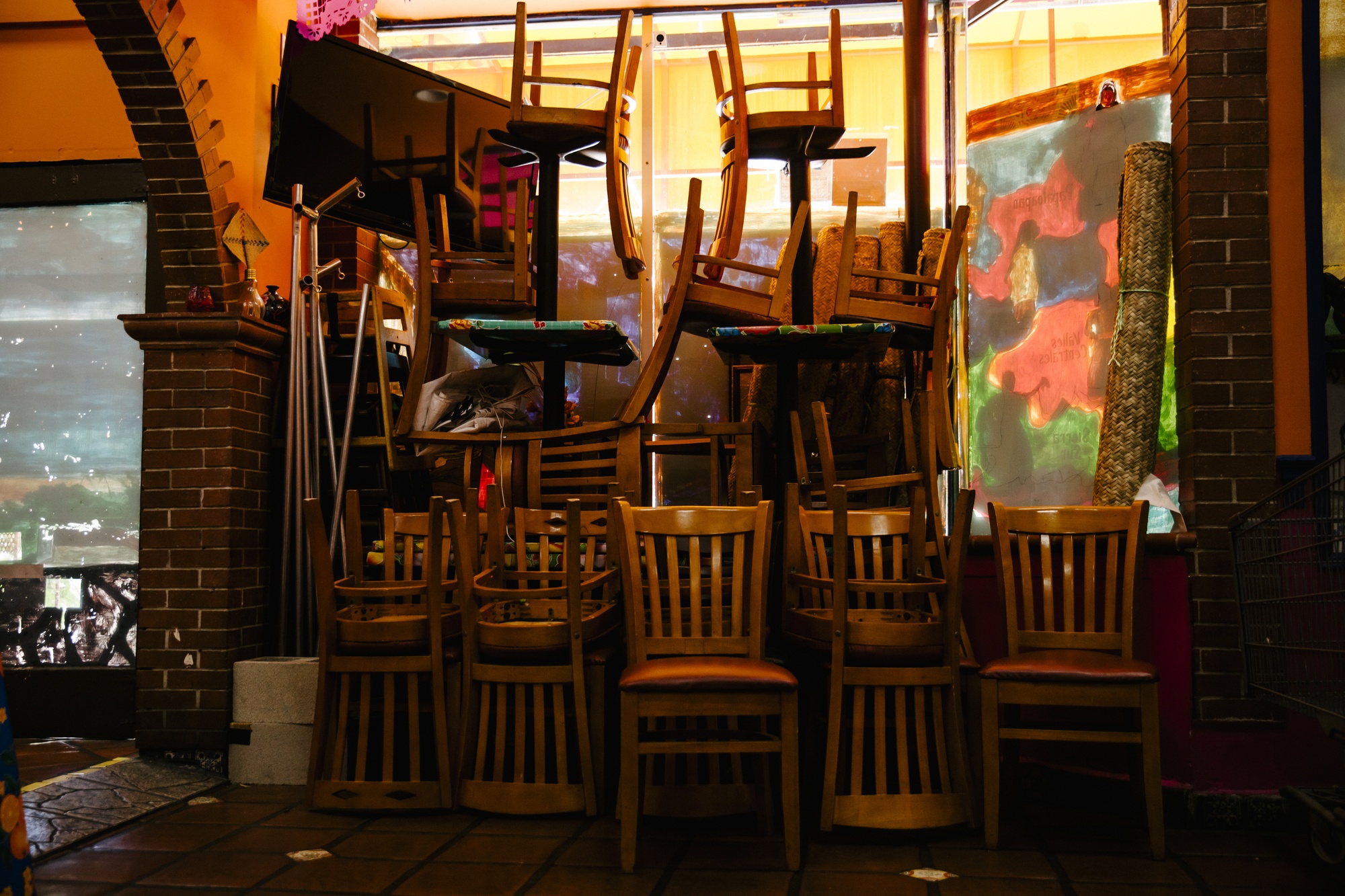
Samanta Helou Hernandez
—
Jacob Restaurant Soul Food & Salad Bar, New York City
Abdoul Ouedraogo, manager
Opened in 2009
Now we just do take-out. We have to move the tables away, and we cut down employee’s hours. It is very hard.
We have lost many customers, they come in and want to sit down, they don’t want to take home. They look around and go away. We’re going to try to build tables outside, I don’t know.
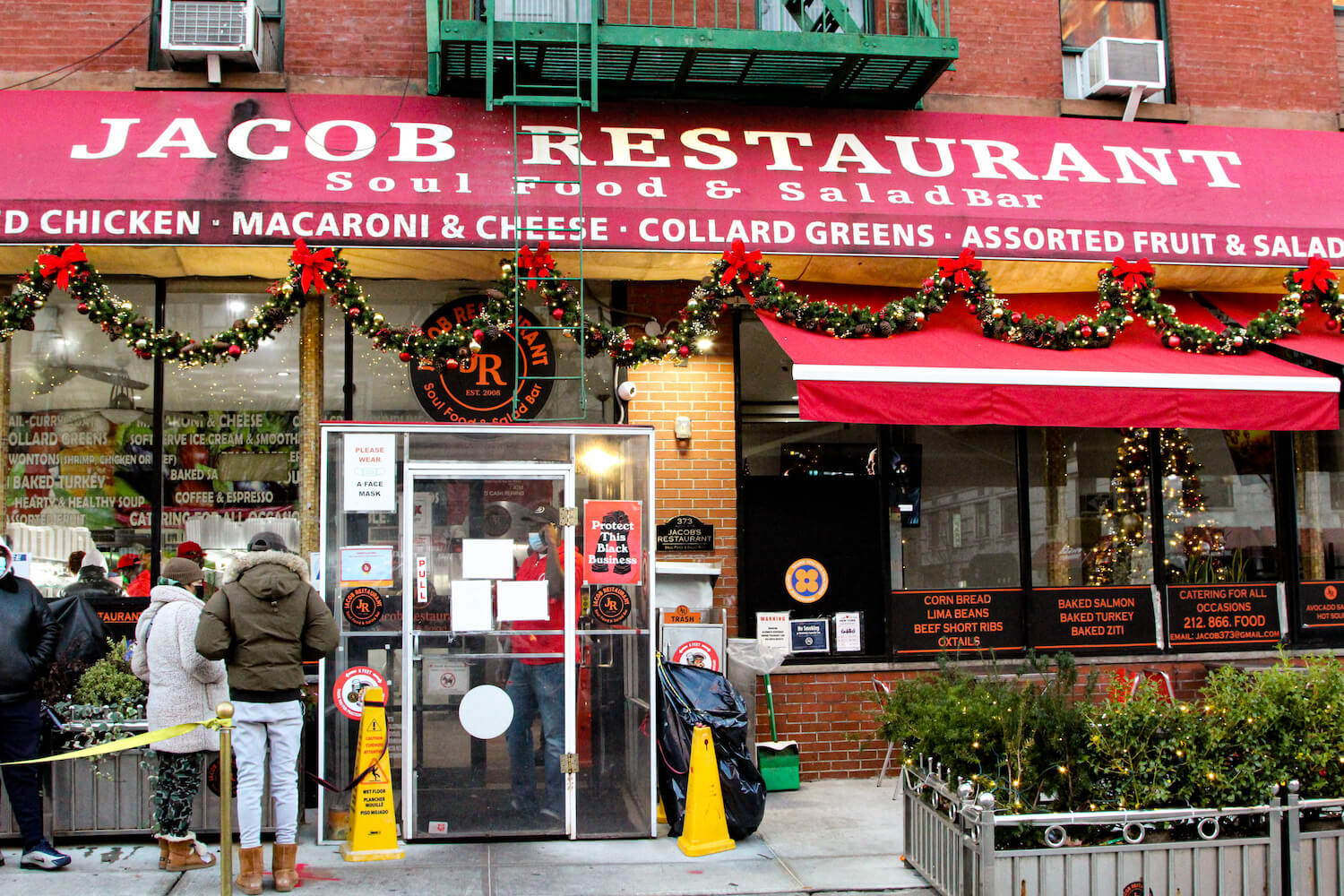
Jacob Restaurant Soul Food & Salad Bar, New York City.
Talia A. Moore
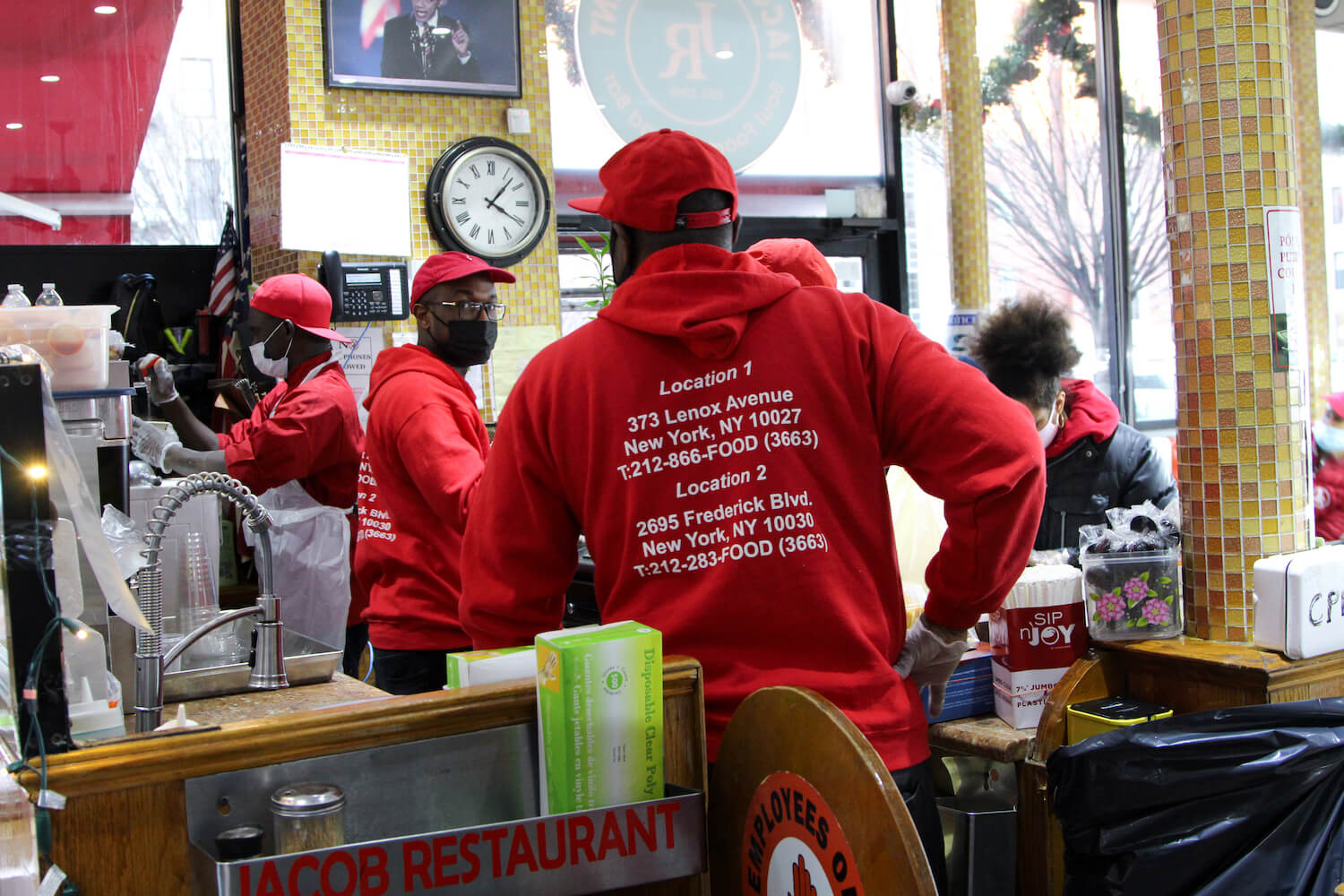
Jacob Restaurant Soul Food & Salad Bar, New York City.
Talia A. Moore
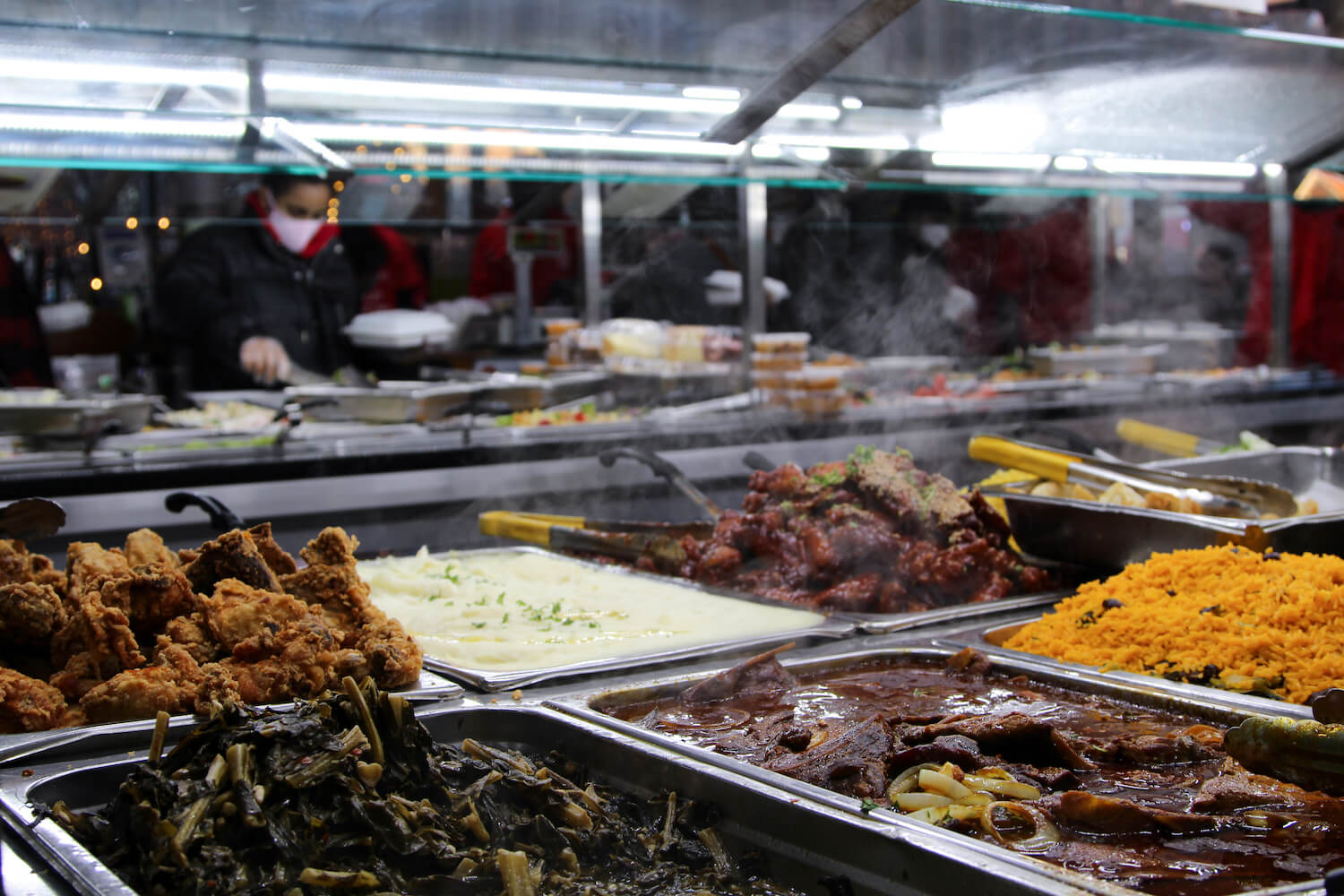
Jacob Restaurant Soul Food & Salad Bar, New York City.
Talia A. Moore
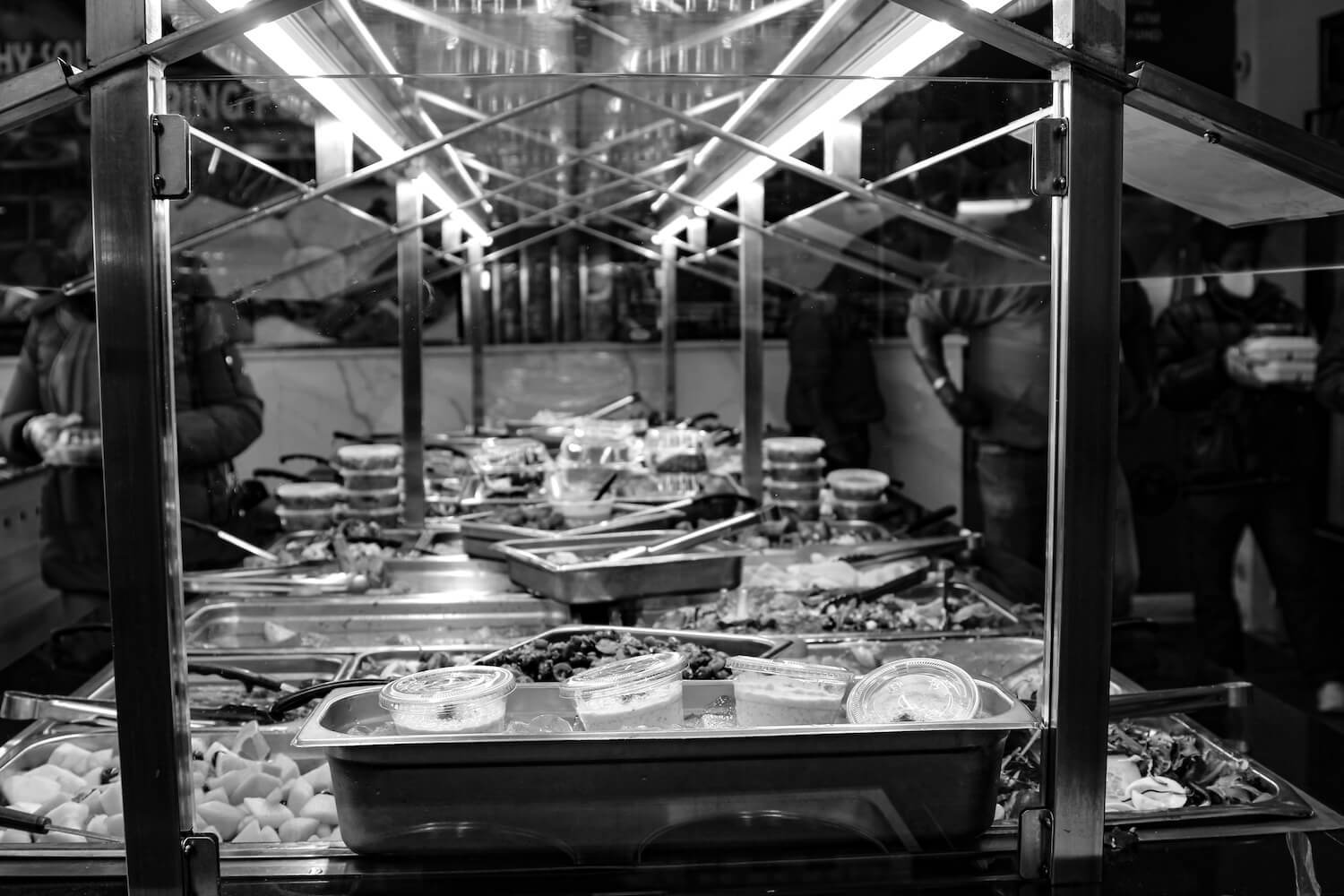
Jacob Restaurant Soul Food & Salad Bar, New York City.
Talia A. Moore
—
Park’s BBQ, Los Angeles
Jenee Kim, owner
Opened in 2003
For 17 years we set record high sales, every year. This year sales are like 17 years ago.
We were doing great before March, 170 seats and really busy, but after the first shutdown we went ‘boom,’ down about 70 percent. Once we started outdoor dining we caught up to 50 percent of what we used to do, and we were happy with that because outdoor and take-out were going up. This time? It’s just really dead. Even take-out is less. We had 65 employees before the pandemic, and now we have about 15. It’s so bad.
But I look at the staff, at holiday season, how are they going to survive? It’s really scary. I have no idea how long we can hang on doing lunch and dinner take-out, but we can’t shut down. We have to stay open because these people have to survive, somehow.
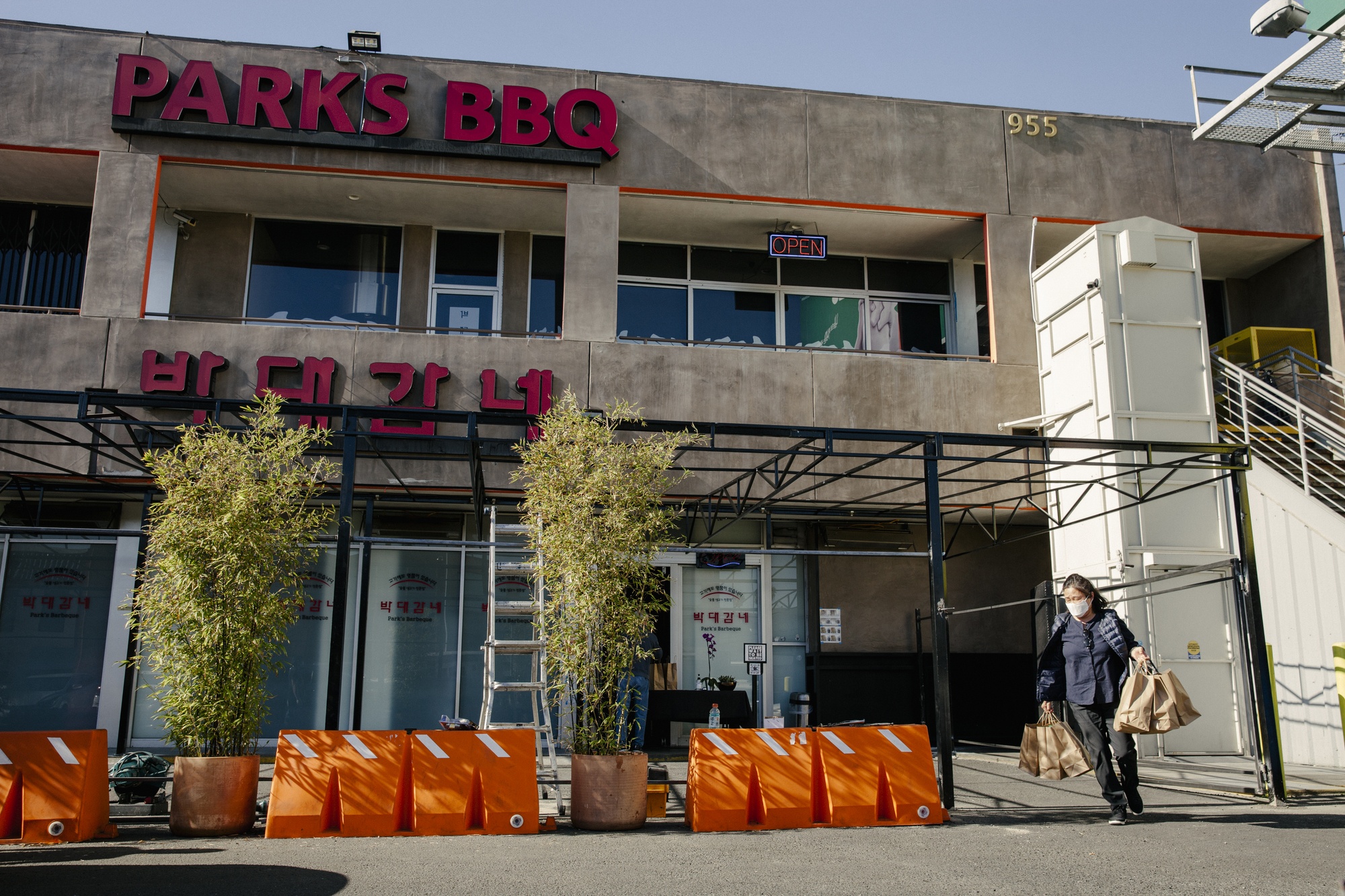
Park’s BBQ, a fixture in Los Angele’s Koreatown neighborhood since 2003, survived for over a year on a mix of take-out, delivery, and parking-lot seating—and on owner Jenee Kim’s determination to provide not only for her customers but for her staff.
Samanta Helou Hernandez
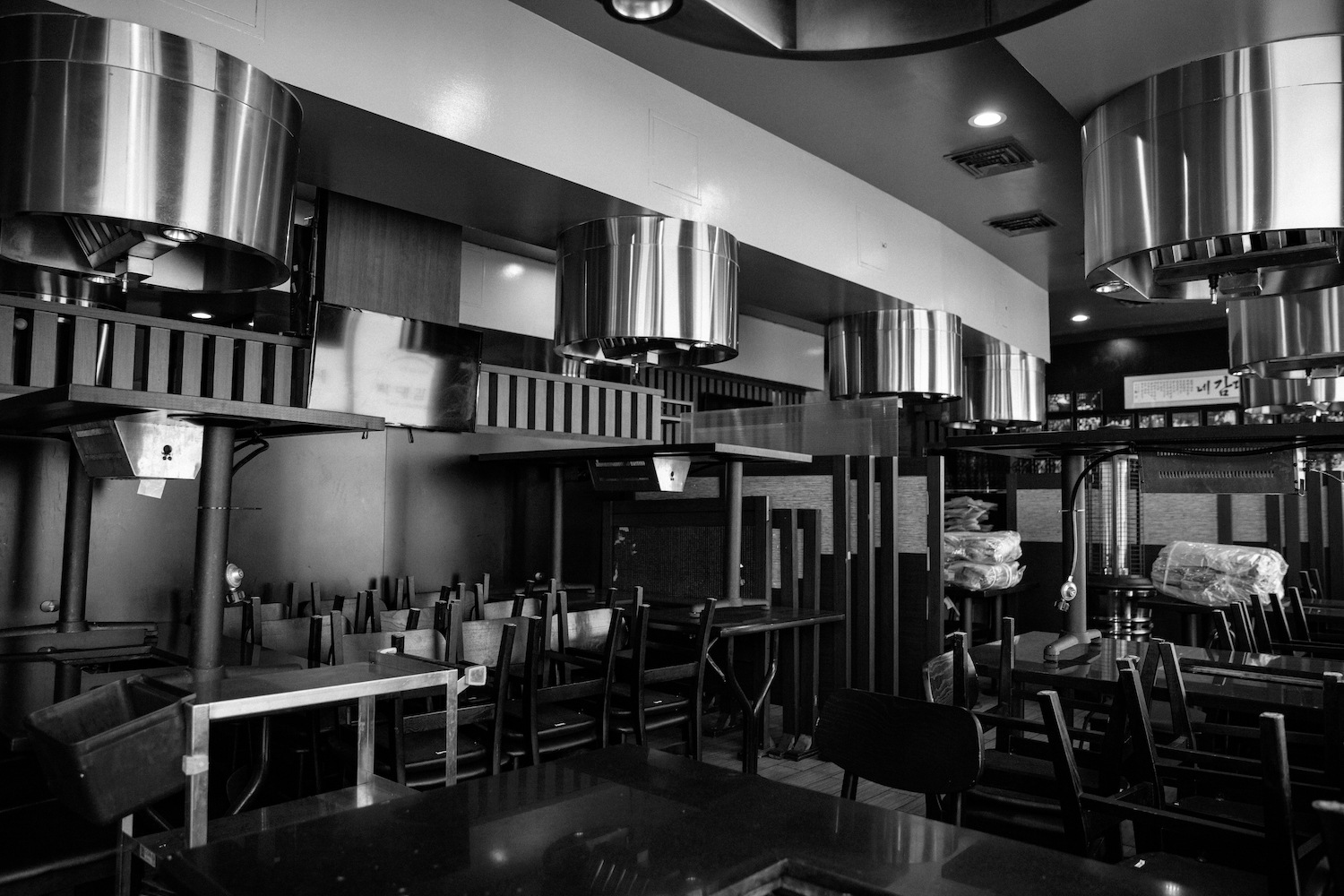
Park’s BBQ, Los Angeles.
Samanta Helou Hernandez
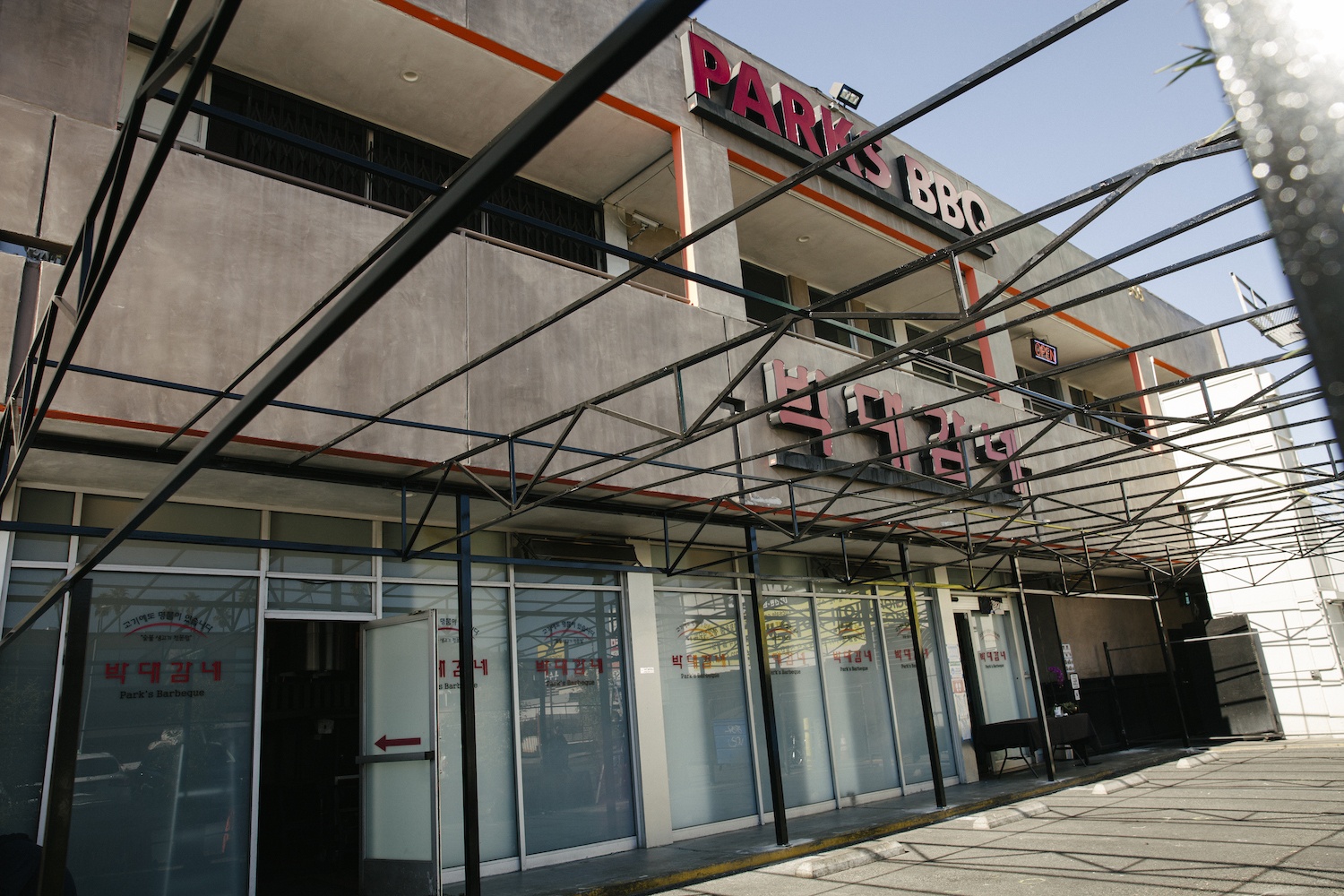
Park’s BBQ, Los Angeles.
Samanta Helou Hernandez
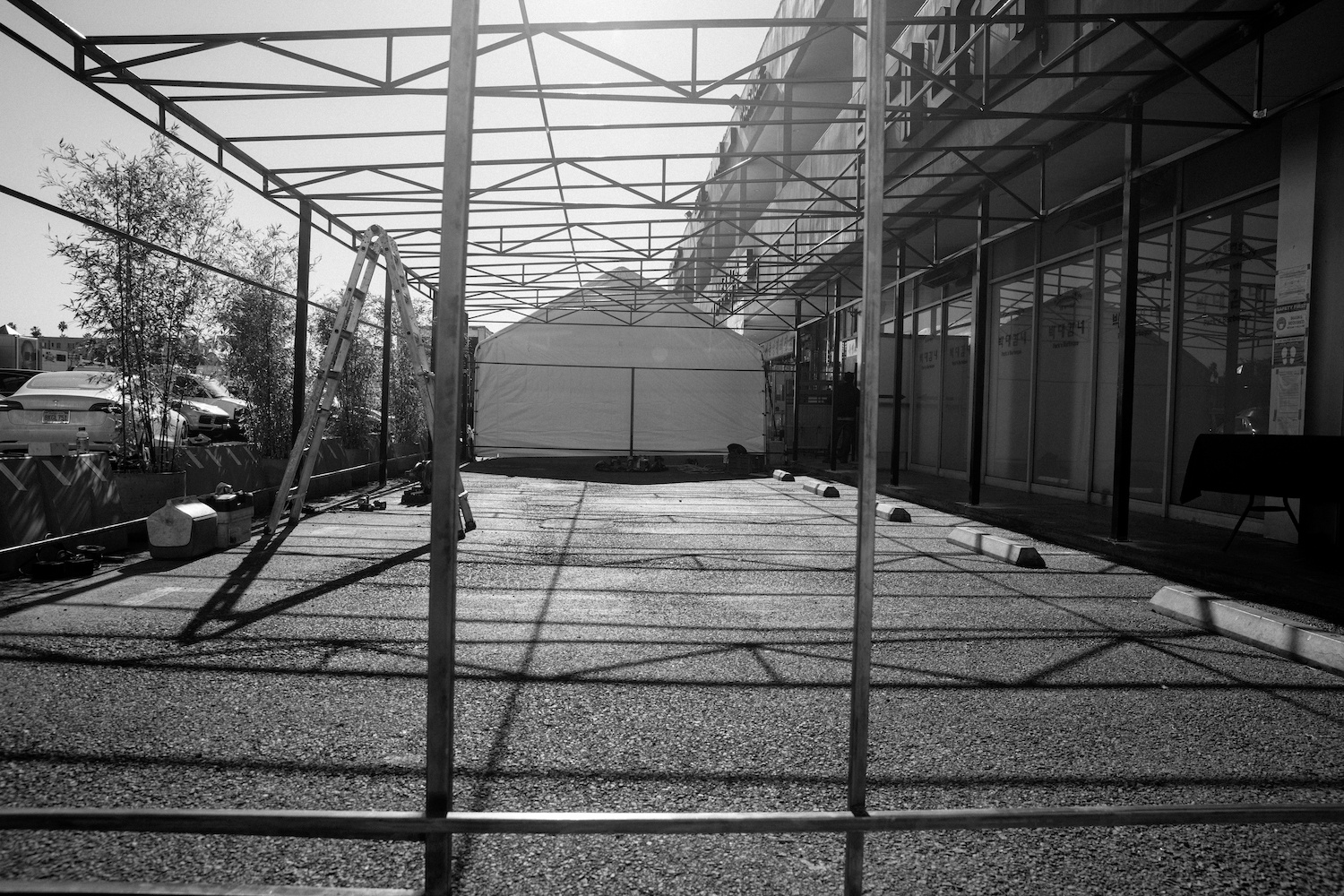
Park’s BBQ, Los Angeles.
Samanta Helou Hernandez
—
Millie’s Cafe, Los Angeles
Robert Babish, owner
Opened in 1926
They’re saying we can open by January 4th but looking around now, at the sickness and everything, I really don’t think this is possible.
We’re hoping to be here for good, but it’s so hard to tell. I’m just trying to keep the doors open.
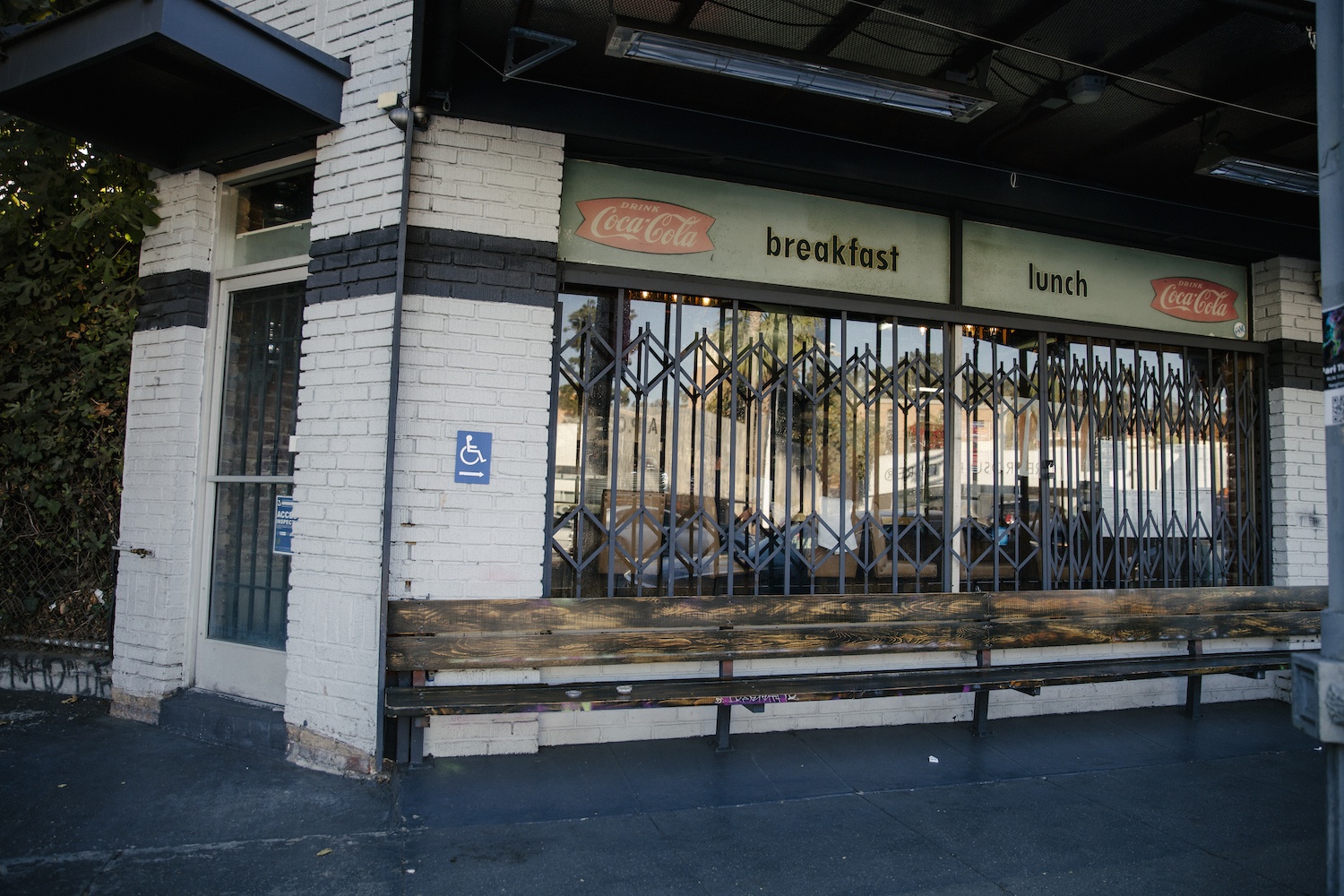
Millie’s Cafe, Los Angeles.
Samanta Helou Hernandez
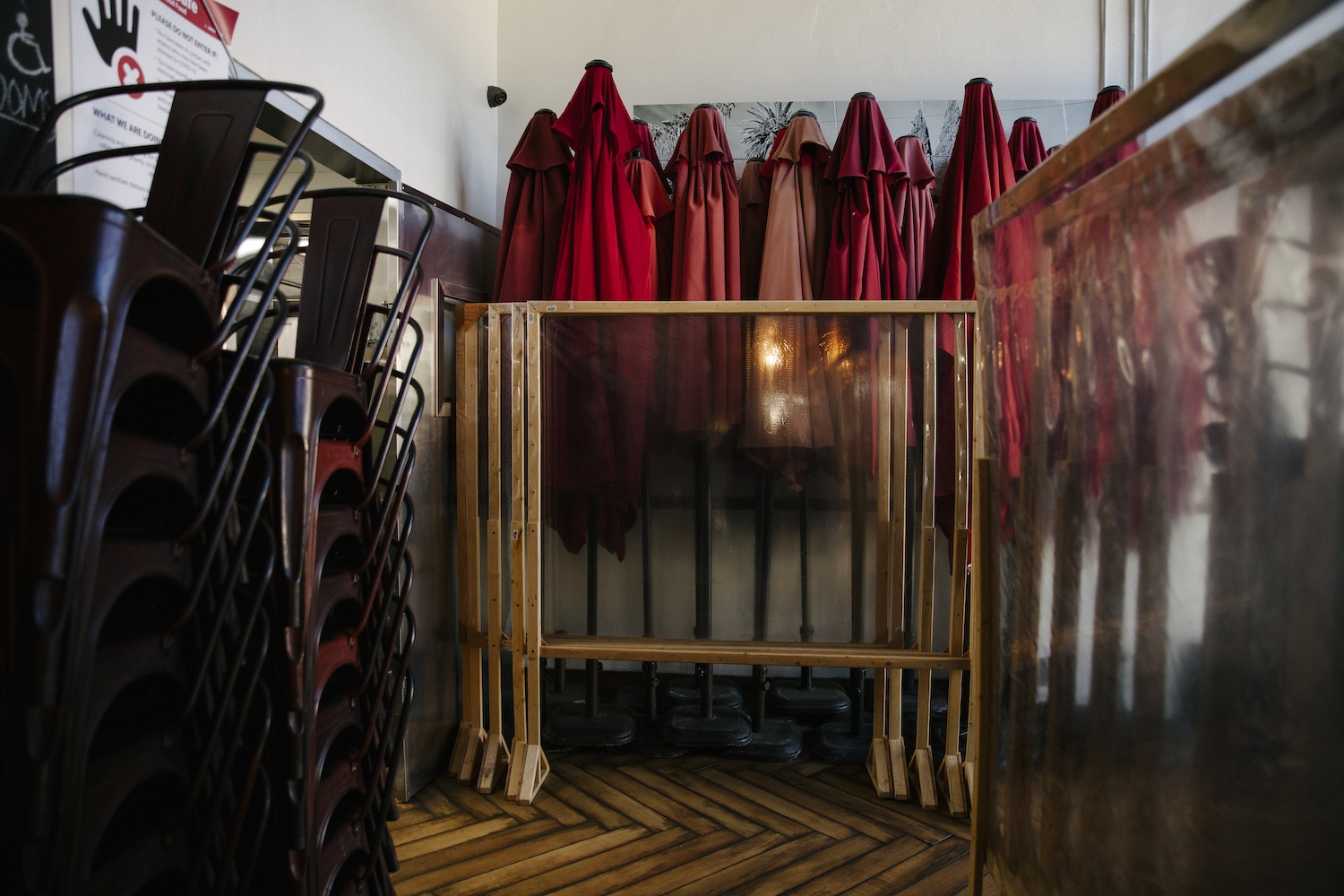
Millie’s Cafe, Los Angeles.
Samanta Helou Hernandez
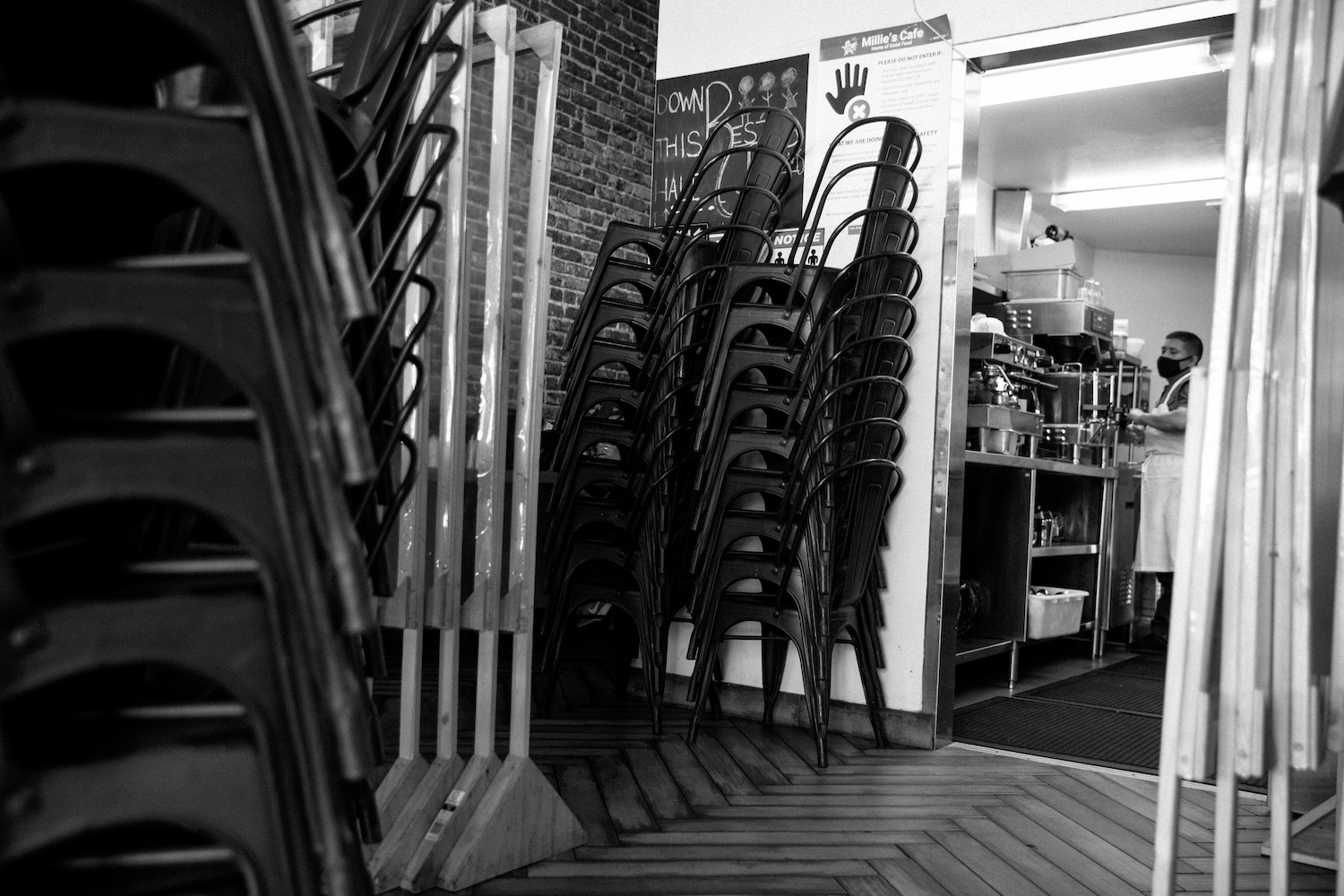
Millie’s Cafe, Los Angeles.
Samanta Helou Hernandez
—
Tip-Top Bar and Grill, New York City
Linda Greer, owner
Opened in 2001
We’re a real social place, a lot of regular customers coming in from the neighborhood. We know their names, they know ours, it’s like family. We’ve lost a lot of those people, because they lost their jobs or they moved back to where they came from before New York.
We own the building so we’re not panicked about rent like so many others, but we still have bills to pay!
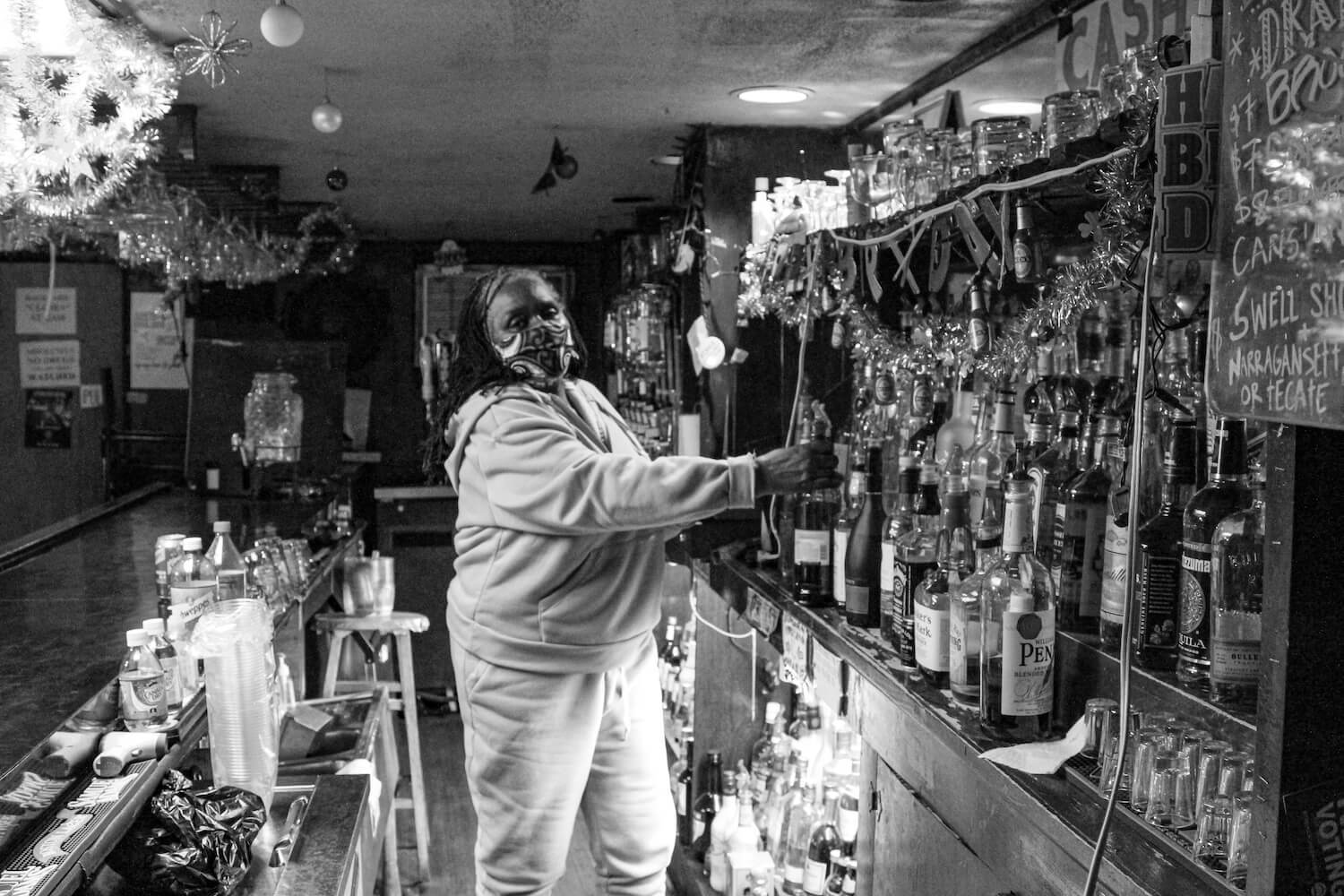
Tip-Top Bar and Grill’s owner, Linda Greer, stands behind the bar.
Talia A. Moore

Tip-Top Bar and Grill, New York City.
Talia A. Moore

Tip-Top Bar and Grill, New York City.
Talia A. Moore

Tip-Top Bar and Grill, New York City.
Talia A. Moore
—
Kismet, Los Angeles
Sara Kramer, co-owner
Opened in 2016
We had to close our falafel restaurant, and it’s bittersweet. Well, no, it’s really just bitter. But we have to continue at the restaurant, and our rotisserie chicken place, and not spend too much time mourning. We don’t have the luxury to stop moving.
I worry most about keeping our staff safe. Our workers can’t be remote, the job requires them to be here, and obviously that creates danger.
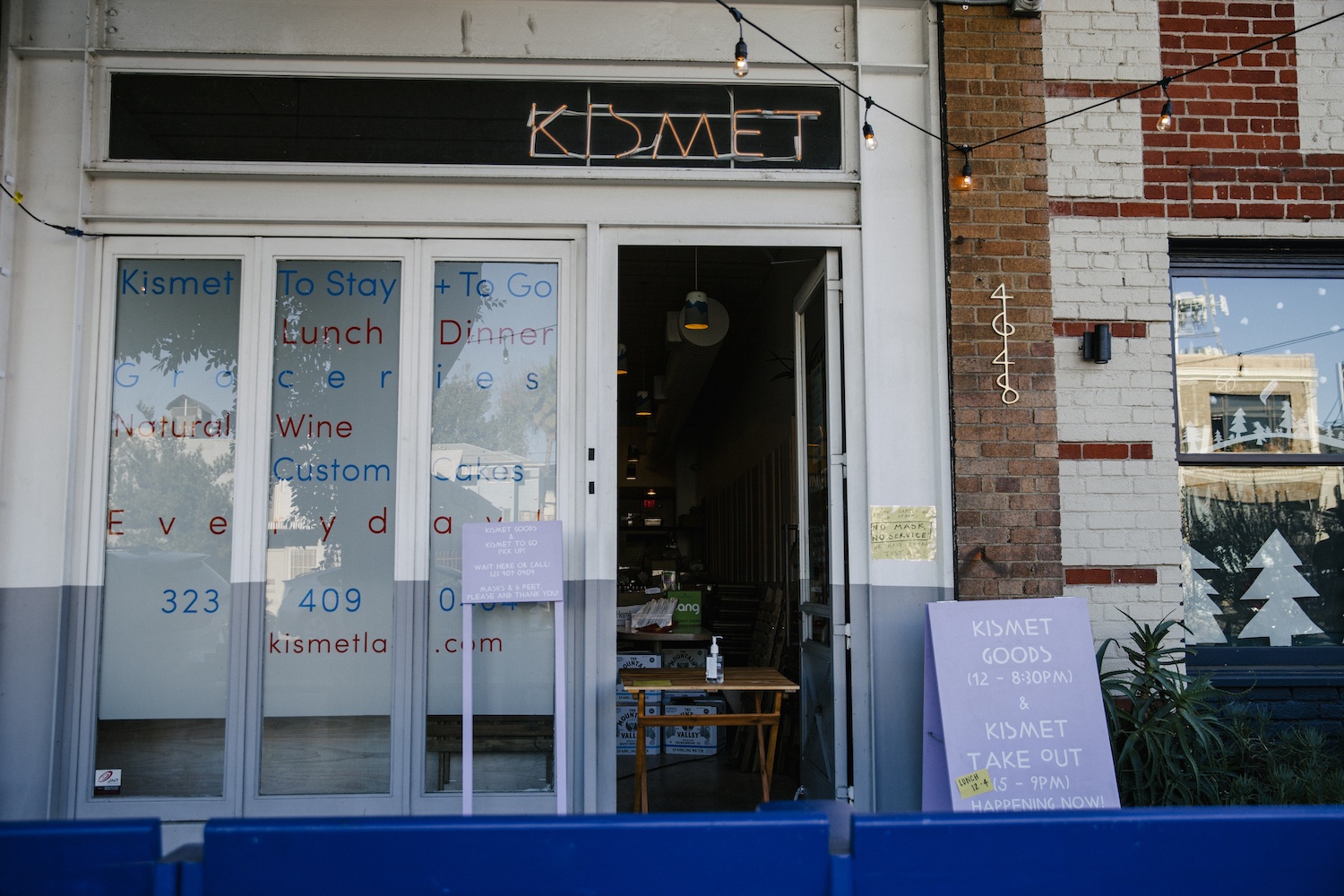
Kismet, Los Angeles.
Samanta Helou Hernandez
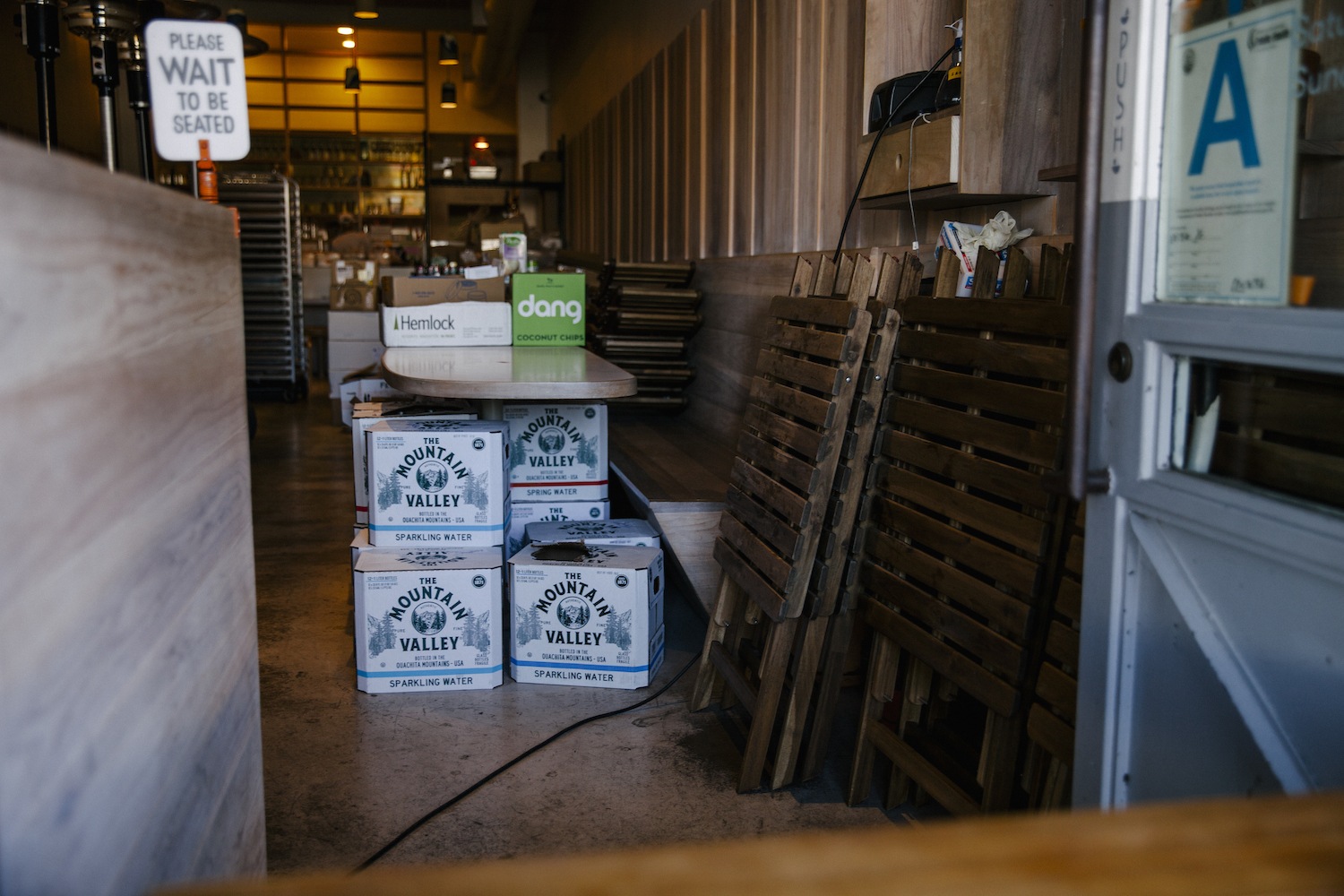
Kismet, Los Angeles.
Samanta Helou Hernandez
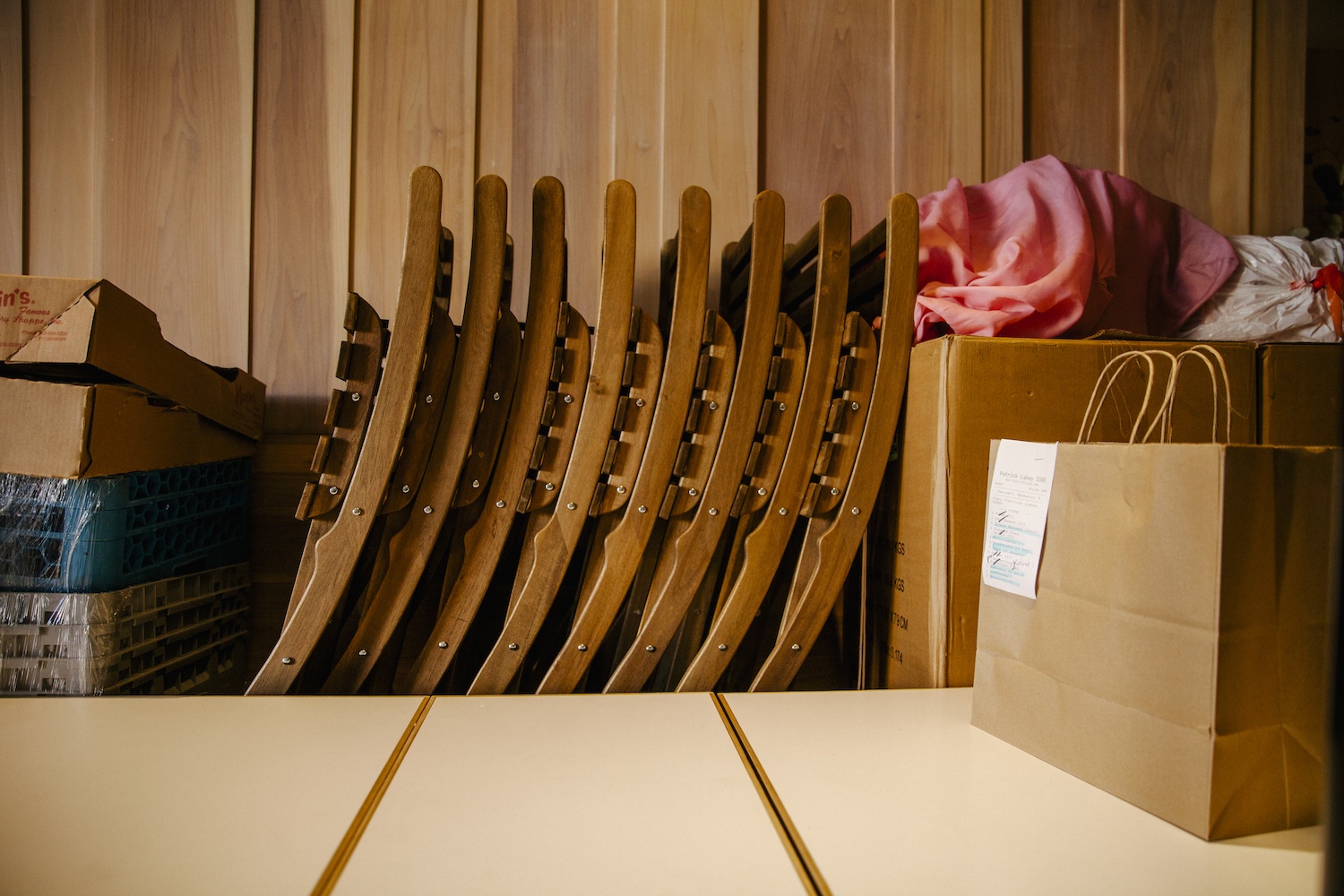
Kismet, Los Angeles.
Samanta Helou Hernandez
—
Thai Diner, New York City
Kelly Peacock, general manager
Opened in February, 2020
We opened in February, three weeks before the mandated Covid shutdown. The neighborhood was very supportive. We were off to a good start. Now we’re on a rollercoaster of emotions. Optimism and excitement for the future, but concern going into these uncertain winter months.
It’s difficult to make any plans without knowing what’s going to happen as far as city mandates. We’re just taking it day by day. No choice really. With a possible indoor dining shutdown looming, dwindling outdoor dining business, and no federal or state help in sight, we’re concerned. It’s going to be important to pivot and adjust extremely quickly in order to make it through.
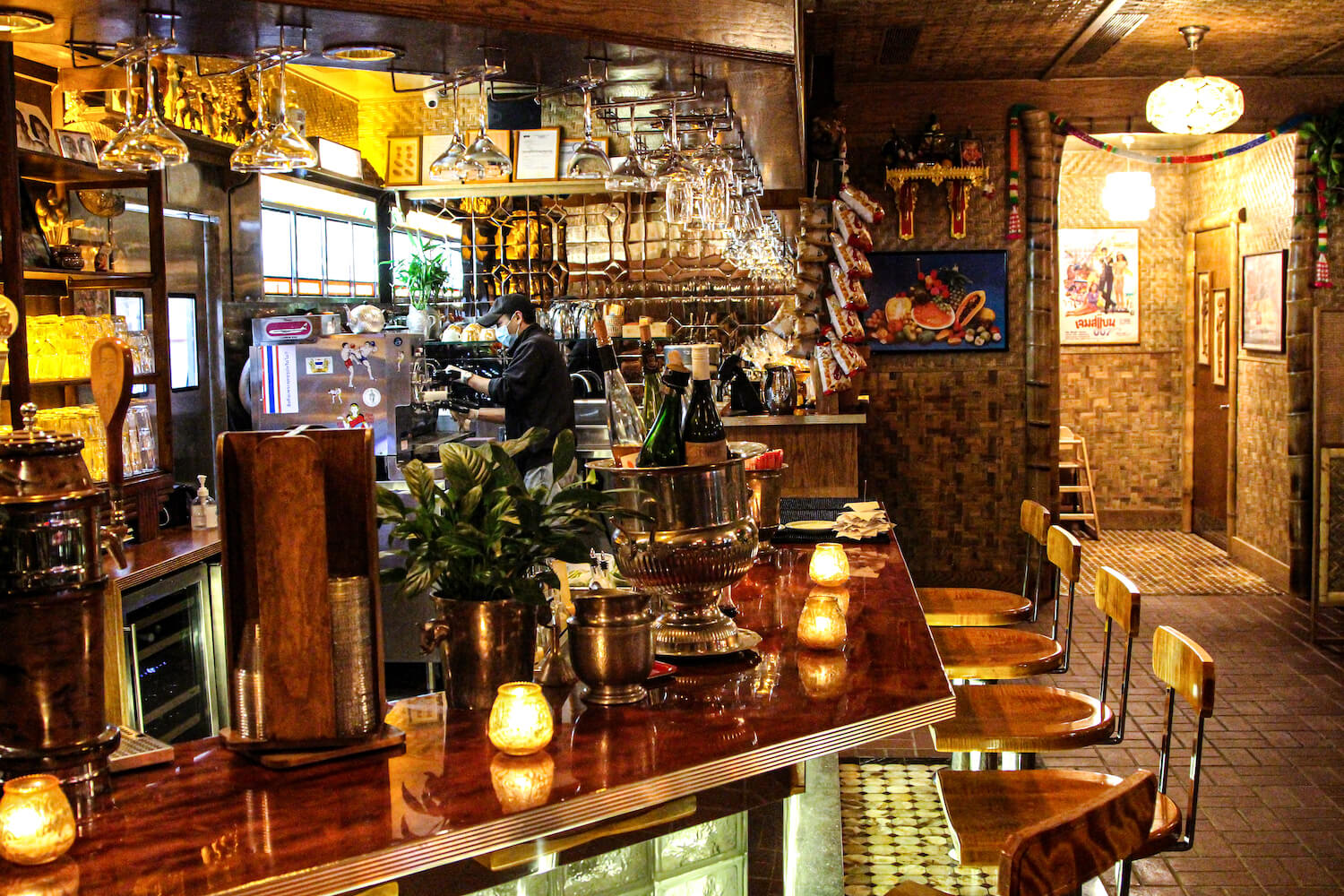
Thai Diner, New York City.
Talia A. Moore
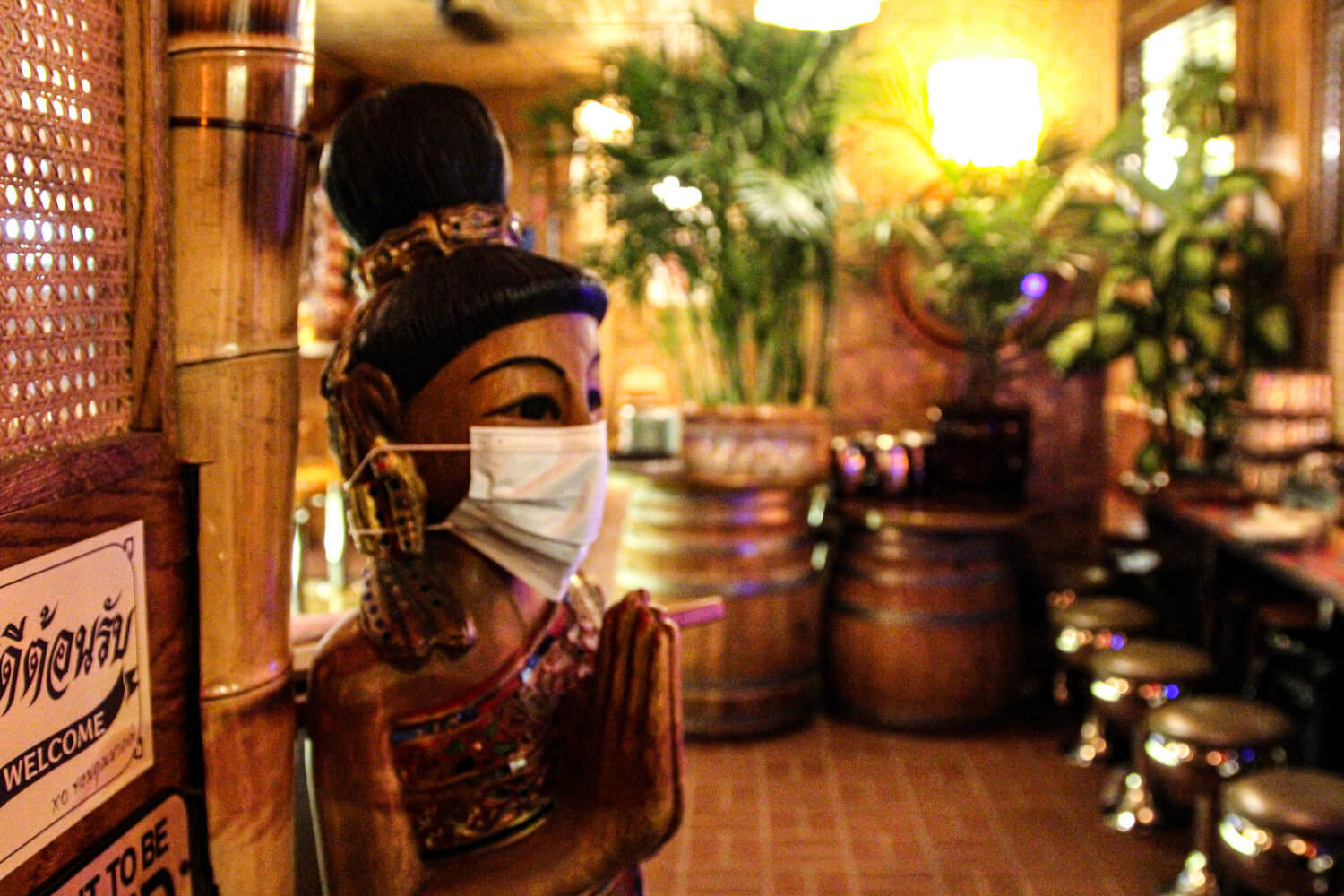
Thai Diner, New York City.
Talia A. Moore
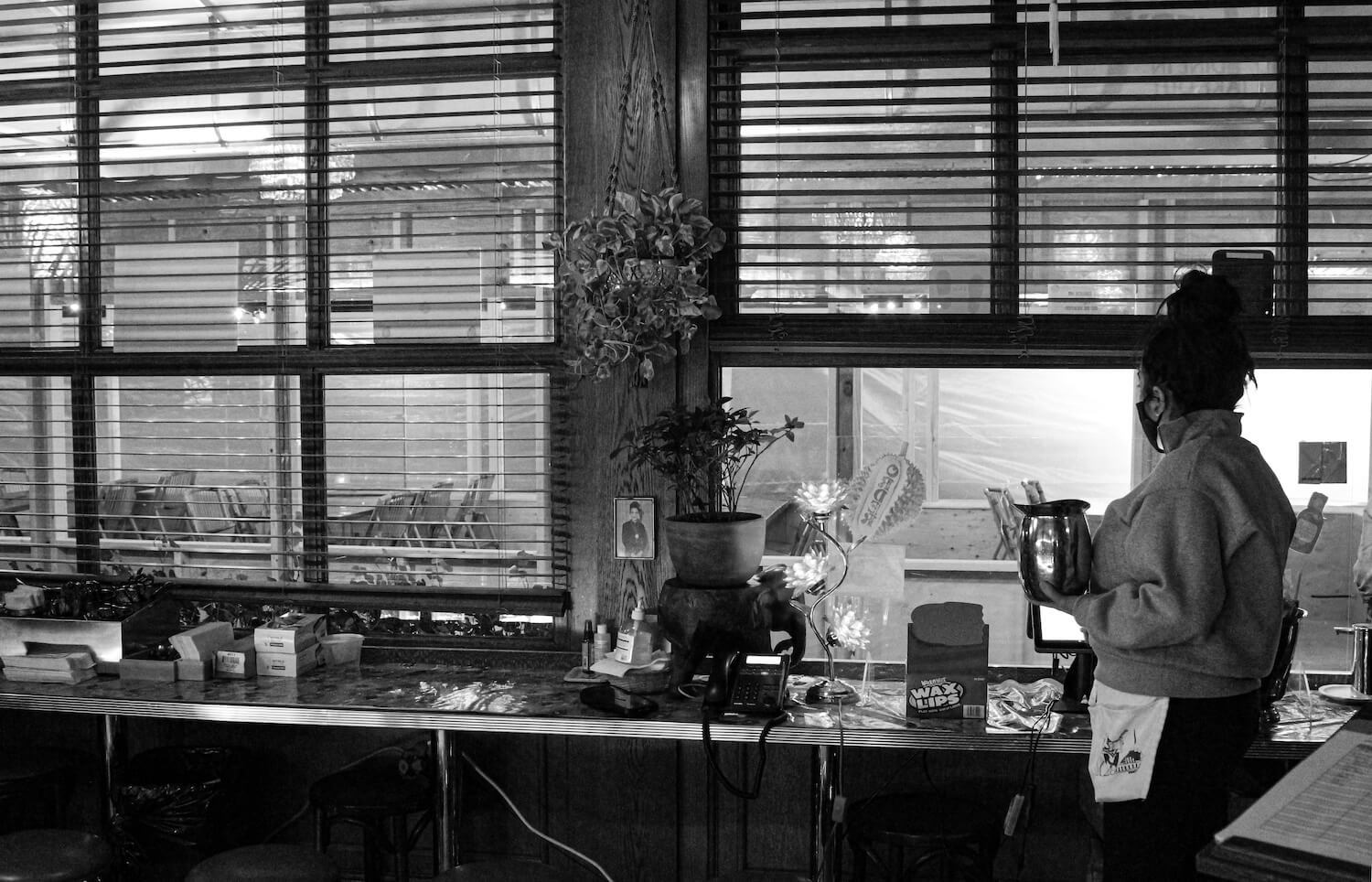
Thai Diner, New York City.
Talia A. Moore
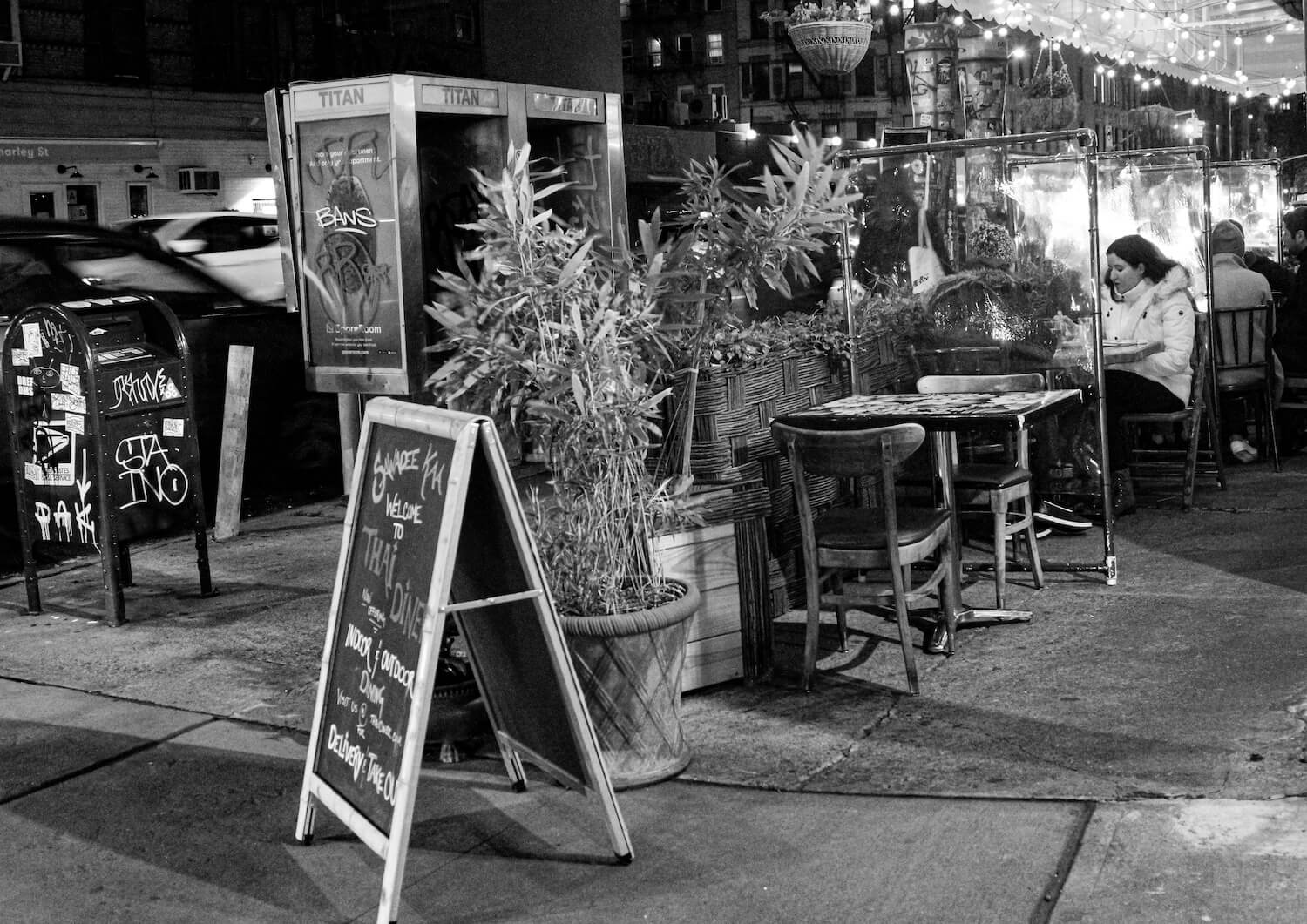
Thai Diner, New York City.
Talia A. Moore
—
Little Dom’s, Los Angeles
Jessica Schmidt, general manager
Opened in 2008
As a longstanding neighborhood restaurant our business is fairly consistent—but on March 16 we had to lay off 78 people. It was chaotic for everyone and our business dropped quite a bit. We quickly converted to a marketplace on top of prepared foods, and then into a need-based grocery space working with six local farms. By the end of April we rehired 26 people.
By mid-June we were doing quite well, at about 70 percent of our revenue the year prior, half take-out and half outdoor dining, but the new shutdown has been devastatingly hard. We had about 90 employees pre-pandemic and the roster now is 39 employees. This has been the most difficult year I’ve ever experienced, in terms of emotional stress, and it’s a high-stress industry anyway. We are all tired and a little numb. We don’t know if people have the energy, capacity and money to continue to support us, but I’m hopeful we will return to full capacity next year.
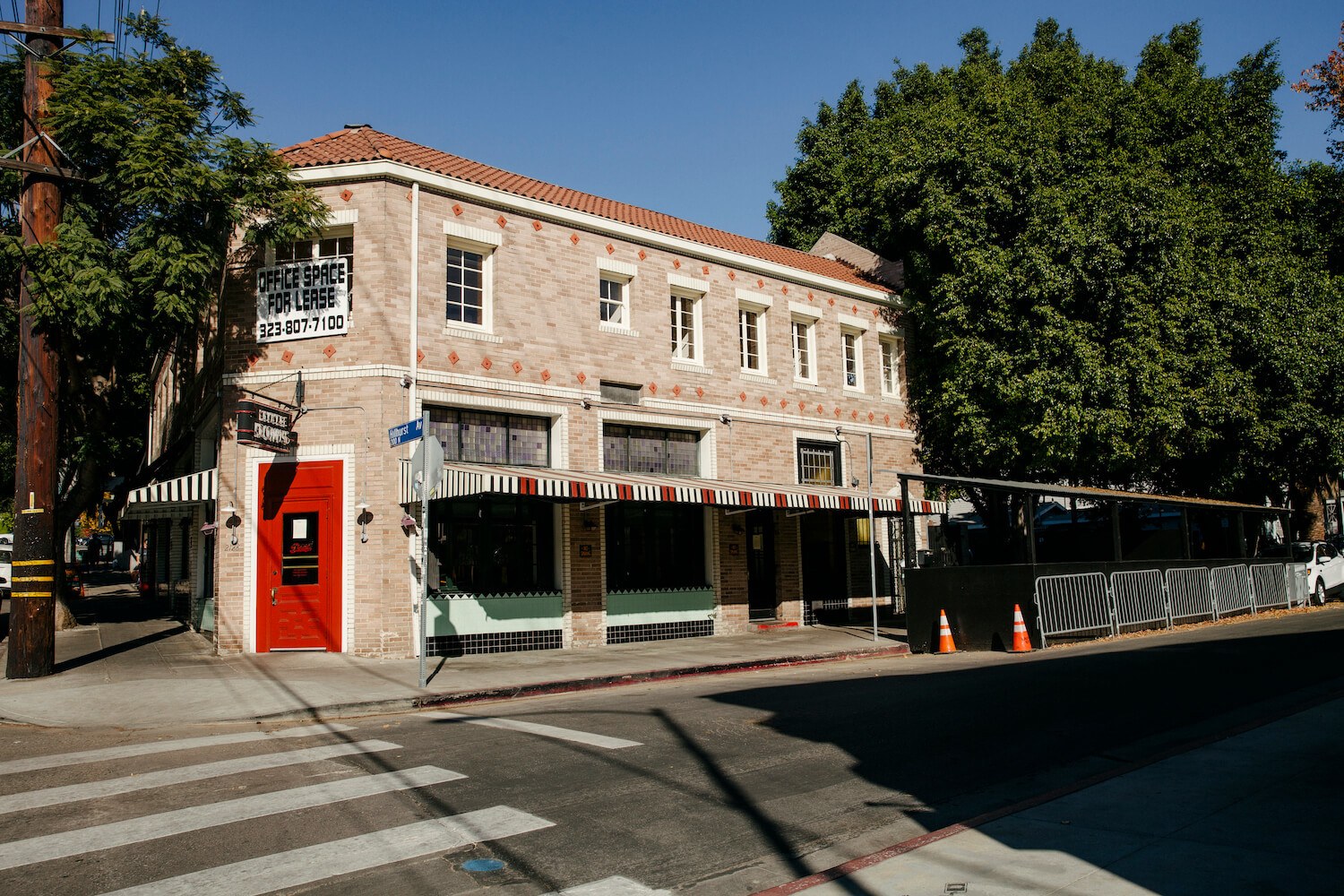
Little Doms, Los Angeles.
Samanta Helou Hernandez
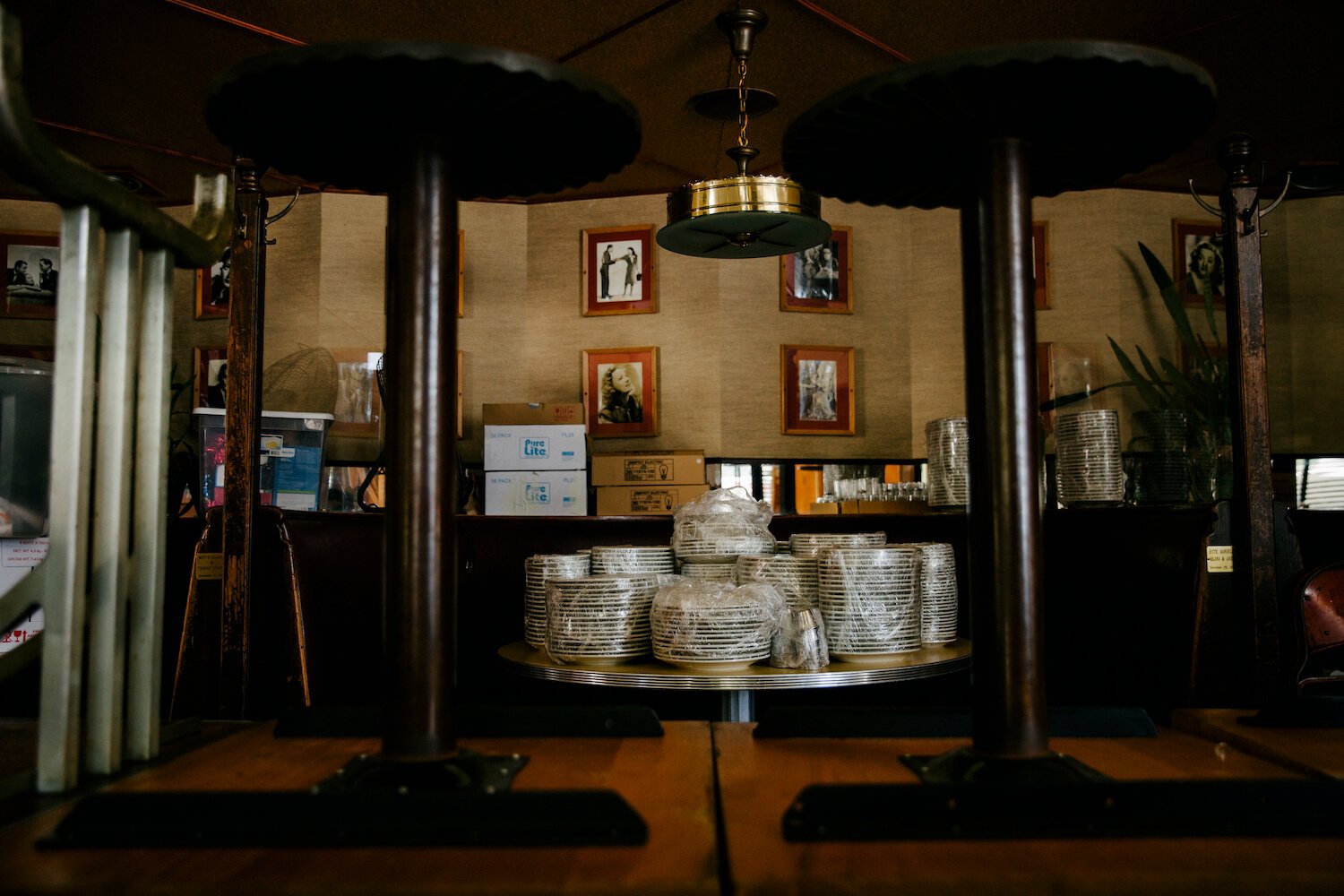
Little Doms, Los Angeles.
Samanta Helou Hernandez
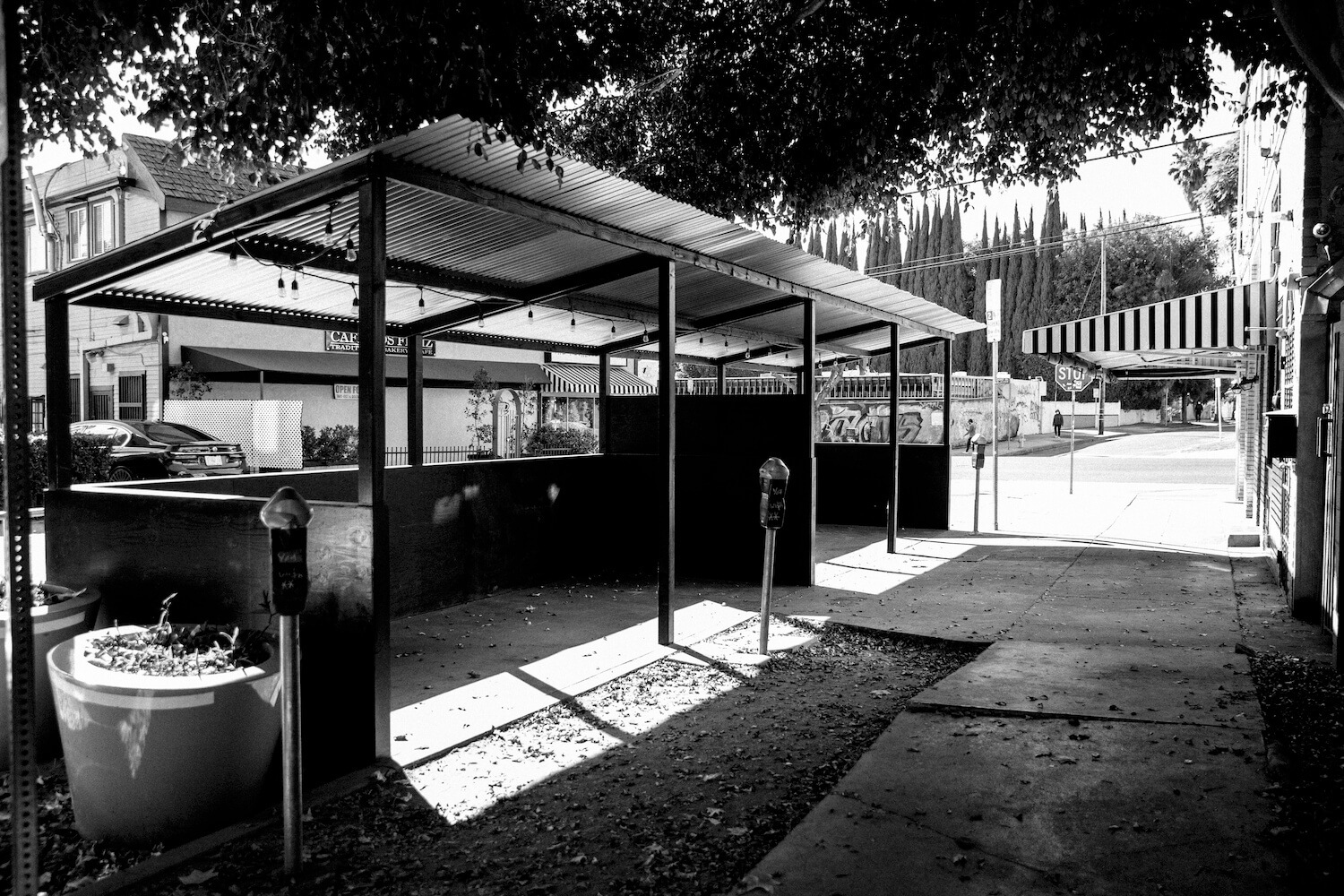
Little Doms, Los Angeles.
Samanta Helou Hernandez
—
Jinya Ramen, Santa Monica
Geoff Witt, general manager
Opened in 2015
I’d say this year has been brutal, but at least we still exist. Brutal is a word for all the restaurants that aren’t around anymore.
We sell hot soup, so winter is our busiest time of year. When I saw all the restrictions coming down in the last month, my optimism kind of drained out. That said, I think we’ve been very fortunate. On some Fridays and Saturdays, the takeout lines are so long it almost seems like business as usual.
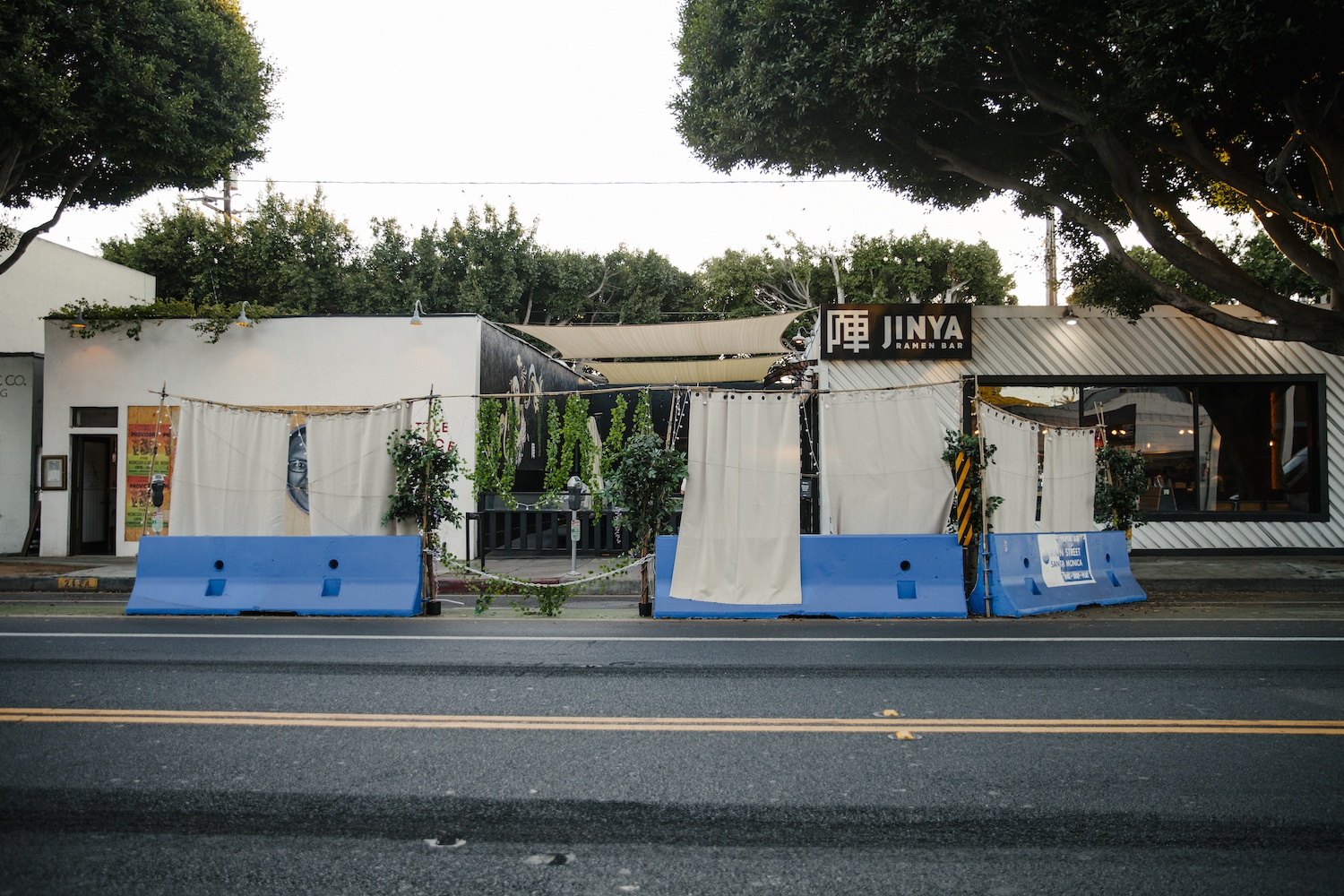
Jinya Ramen, Los Angeles.
Samanta Helou Hernandez
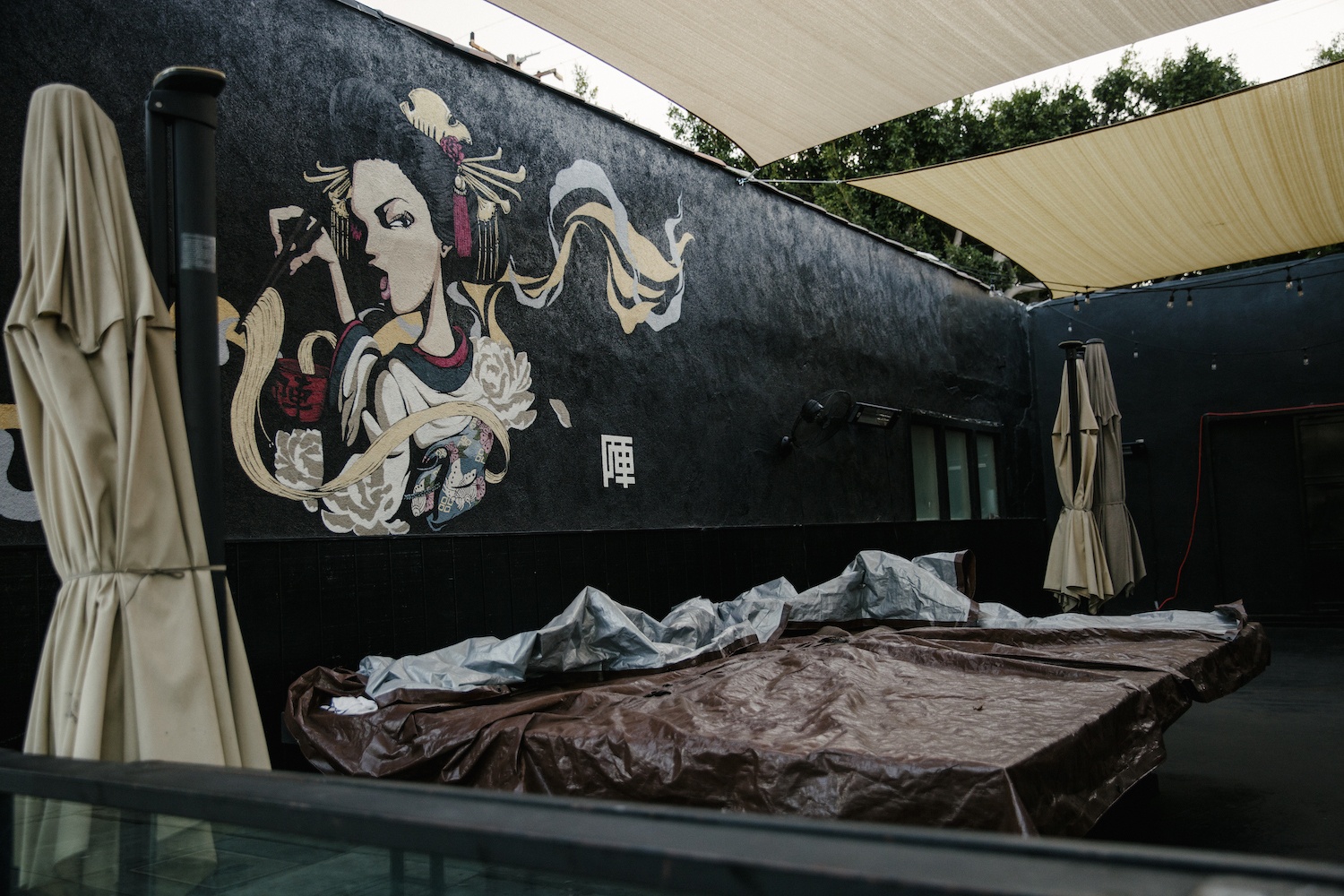
Jinya Ramen, Los Angeles.
Samanta Helou Hernandez
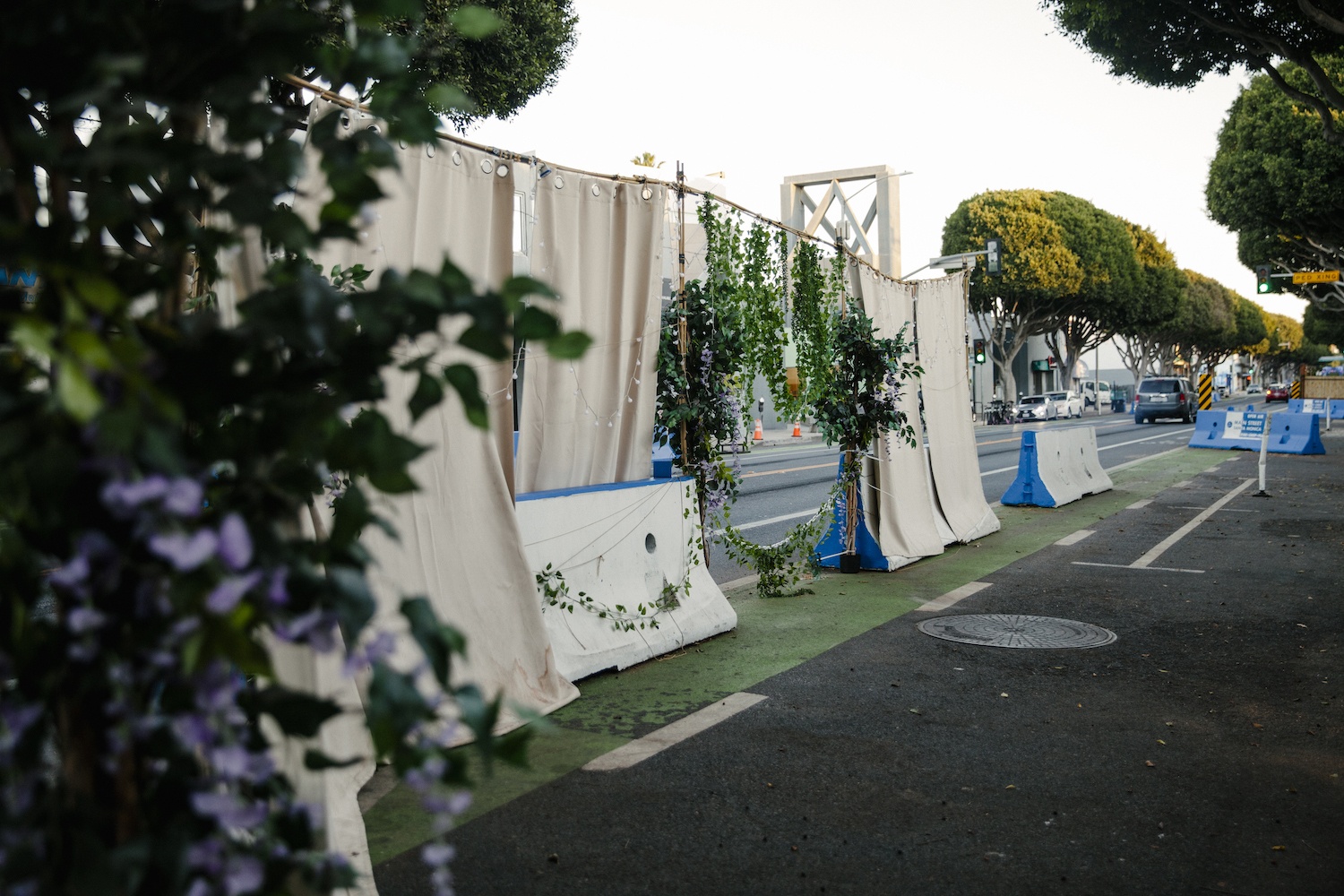
Jinya Ramen, Los Angeles.
Samanta Helou Hernandez

